

Ultimate Guide to Planning Field Trips for Kids
Welcome to our guide for planning and preparing for a field trip! As a preschool teacher , here I provide you with comprehensive information and helpful tips on organizing a successful and enriching field trip for kids , specifically geared towards preschool-aged children. Join me as we dive into the exciting world of field trip planning and activities!
Section 1: Choosing the Perfect Destination

When planning a field trip, selecting the right destination is key. Consider the educational objectives, curriculum relevance, and age appropriateness of the location. Look for interactive exhibits, guided tours, and activities that align with the topics you want to cover. Some popular choices for preschool field trips include museums, nature centers , farms , aquariums, and planetariums.
Section 2: Field Trip Planning
Set Clear Goals : Determine the learning outcomes and objectives you want to achieve through the field trip. Tailor your activities and discussions accordingly to maximize the educational value.
Research and Pre-Visit : Familiarize yourself with the destination by researching online, contacting the facility, and even scheduling a pre-visit. This will help you anticipate any potential challenges and tailor the experience to meet the needs of your young learners.
Obtain Permissions : Communicate with parents and obtain necessary permissions and waivers well in advance. Inform them about the field trip’s purpose, date, duration, and logistics. Provide them with emergency contact information and any specific requirements for the day.
Volunteering Teachers : Coordinate with teachers and parent volunteers to ensure sufficient supervision during the field trip. Assign specific responsibilities to each volunteer, such as group leaders, first aid assistants, or photographers. Clearly communicate the expectations and guidelines for the volunteering teachers to maintain a safe and organized trip.
Arrange Transportation : Determine the most suitable mode of transportation based on the distance, group size, and accessibility of the destination. Ensure you have sufficient adult supervision during transit.
Create a Schedule : Develop a detailed itinerary that includes arrival and departure times, activity timelines, lunch breaks, and restroom breaks. A well-structured schedule ensures a smooth and organized experience.
Dietary Considerations : Before the field trip, collect information about any dietary restrictions or allergies among the children. Communicate these requirements to the facility or arrange packed lunches accommodating everyone’s needs.
Snacks and Water : Plan snack breaks throughout the day to energise the children. Encourage parents to pack healthy snacks such as fruits, granola bars, or cheese sticks. Additionally, ensure an adequate water supply or provide refillable water bottles for each child.
Section 3: Field Trip Activities

Guided Tours: Arrange guided tours led by knowledgeable staff or docents who can provide relevant information and engage the children in interactive discussions. Encourage students to ask questions and actively participate in the tour.
Hands-on Experiments : Seek out activities that allow children to engage in hands-on experiments and exploration. This tactile experience will deepen their understanding and leave a lasting impression.
Interactive Workshops : Many educational destinations offer workshops tailored to specific age groups. These workshops often involve interactive demonstrations, experiments, or crafts, providing a valuable and engaging learning experience.
Scavenger Hunts : Incorporate scavenger hunts or treasure hunts to make the field trip more exciting and interactive. Prepare age-appropriate clues or questions related to the exhibits or environment for the children to solve.
Reflection and Discussion : Allocate time for reflection and group discussions at various points throughout the trip. Encourage children to share their observations, ask questions, and express their thoughts and feelings about the experience.
Read more on: Places to take preschool kids for an educational field trip
Section 4: Safety Considerations
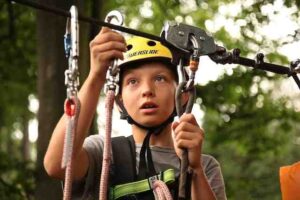
First Aid and Emergency Preparedness : Ensure you have a well-stocked first aid kit and designate a responsible adult with first aid training. Familiarize yourself with emergency procedures and establish a plan for any unforeseen situations.
Adult-to-Child Ratio : Maintain an appropriate adult-to-child ratio to ensure the safety and supervision of all participants. Consider dividing the children into smaller groups, each with a designated adult supervisor. This allows for better management and attention to individual needs.
Medical Information : Collect and carry necessary medical information for each child, including allergies, medications, and emergency contact details. Keep this information easily accessible in case of any medical emergencies.
Rules and Behavior Expectations : Clearly communicate the behaviour expectations to both children and accompanying adults before the trip. Emphasise the importance of following instructions, staying with the group, and respecting the facility and its exhibits.
Communication Plan : Establish a communication plan to keep parents informed throughout the trip. Share contact details and schedule regular updates, ensuring parents know of any changes or delays.
Section 5: Post-Trip Follow-up
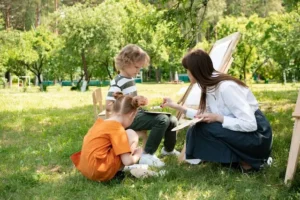
Reflection Activities : Engage the children in post-trip activities that encourage reflection and reinforce learning. This could include discussions, journaling, or creating artwork inspired by their experiences.
Parent Engagement : Share highlights and photos of the field trip with parents through newsletters, emails, or a dedicated online platform. Encourage parents to discuss the trip with their children and extend their learning at home.
Thank-You Notes : Have the children write thank-you notes or draw pictures expressing their gratitude to the destination and any staff members who made the trip memorable. This teaches them the importance of appreciation and reinforces social skills.
Evaluation and Feedback : Gather feedback from both children and accompanying adults to evaluate the success of the field trip. Use this feedback to improve future trips and enhance the overall experience.
Volunteer Appreciation : Express your gratitude to the volunteering teachers for their support and dedication. Recognize their contributions through thank-you notes, certificates, or small tokens of appreciation. This gesture fosters a sense of teamwork and encourages continued involvement in future field trips.
Conclusion:
Organizing an educational field trip for preschool kids requires careful planning and preparation, but the rewards are immeasurable. By selecting the right destination, creating a well-structured itinerary, and incorporating engaging activities, you can provide a valuable and memorable experience that nurtures young minds. Remember to prioritize safety, communicate effectively, and follow up with post-trip activities to maximize the educational impact. So, embrace the excitement of field trip planning, and watch as your preschoolers embark on an educational journey they’ll cherish for years to come.
Popular Tags:
Leave a reply cancel reply.
Your email address will not be published. Required fields are marked *
Save my name, email, and website in this browser for the next time I comment.
Post You Also Like
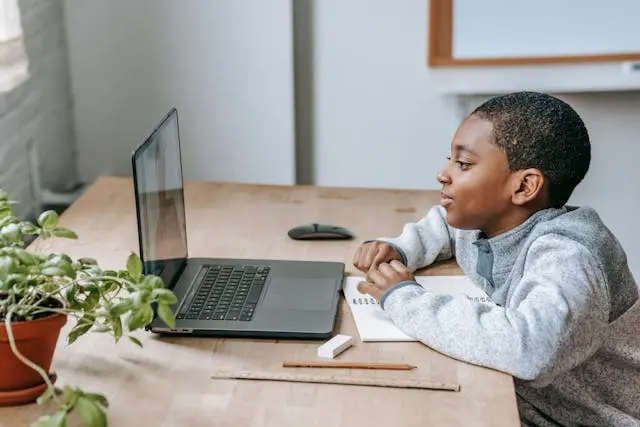
Discover How AI is Transforming Children’s Writing Skills
- June 12, 2024

Creative 20+ Sensory Food Play Ideas for your
- June 10, 2024

The Importance of Messy Play- Benefits and Ideas
- May 22, 2024
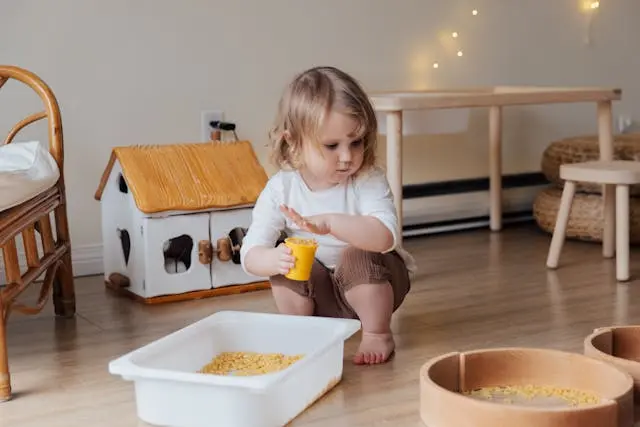
The Ultimate Guide to Sensory Play for Infants

Navigating Parenting Challenges: A Guide to Parenting Counselling
- May 18, 2024
- Privacy Policy
- Parenting & Family Consultation
- Sensorial Workshop/Class
- Advertise with us
- Write for us
- Preschool Finder
- Things to do
- Preschool Blogs
- Baby & Toddler Blogs

MCaresforkids Readers! I am a passionate preschool teacher with over five years of teaching experience and am fascinated with all thingschildren. I started this blog to pen down my thoughts about parentingand share them with first-time and seasoned parents like yourselves.
In support of

Copyright © 2024 MCaresForKids. All Rights Reserved

Guide to Planning Preschool Field Trips: Safety Tips
- Sylvia Cochran
- Categories : Preschool teaching strategies, advice & tips
- Tags : Early education information for teachers, parents & caregivers
Field Trips Are More than Just Entertainment
Preschool field trips are a mix of personal empowerment for children and the wonderment of seeing classroom lessons learned come to life. An experience as simple as seeing, touching and pressing the buttons on a traffic light, observing the light changes and following the rules of the road when crossing the street is invaluable to reinforce the theoretical learning from class.
Take for example the impact on a charitable organization that even young preschoolers can make. While there are countless advantages to the planned excursion, an extensive list of safety tips for a field trip must be followed to ensure that everyone remains secure during the trip. This also ensures that liability issues for the preschool are effectively lessened.
Staying Safe
Vehicle Safety
While a professional transportation company is almost always the best method of taking the children to their destination, shrinking budgets may call for the use of parent vehicles. Preschool teachers need to make sure to plan ahead and verify the actual available space in the vehicles and also remind parents, who are not participating in transporting any children, to leave the youngsters’ car seats behind.
Meals and Snacks
Due to the concern of food allergies, many elementary schools have adopted a brown bag lunch policy on field trips. Parents are responsible for packing lunches for their children in disposable bags. The idea is to have a nutritious meal and snacks available for the children without having the responsibility of tracking lunch boxes. This is also a workable solution for preschool field trips. Safety tips should also include a warning against children switching or sharing their lunches.
Medical Issues
Preschoolers suffering from medical conditions that may require treatment on the trip should ideally be accompanied by a parent or caregiver. If this is not possible, the preschool teacher must ensure that she is able to fulfill the treatment requirements. Additionally, each child’s parent should fill out a generic “consent for treatment” form that authorizes the preschool teacher to call for medical assistance and give permission to treat.
Adult to Child Ratio
The level of supervision is generally mandated by state law. As a general rule, the minimum requirement should be one adult for every five preschoolers.
It might appear odd to check off children’s names on a paper each time a bus or van is boarded and disembarked. Nevertheless, Carolyn Tomlin from Early Childhood News provides ample cautionary tales of early childhood educators and care providers, who ran afoul the law – sometimes with tragic results – while transporting young children. Checking off each child’s name at each stage of the trip limits the possibility of “forgotten” or lost children.
Lessen Liability Impact on Preschools
Accidents can and will happen; this is a liability preschools understand before permitting the planning of field trips. Legal responsibilities can be greatly reduced by preventing avoidable mistakes or accidents. Additionally, since the Americans with Disabilities Act (ADA) guarantees disabled preschoolers the same access to field trips and transportation as their peers, safety tips become even more important.
- Early Childhood News. “Transportation Issues: What Are Your Responsibilities?” at https://www.earlychildhoodnews.com/earlychildhood/article _view.aspx?ArticleID=679 (accessed May 30, 2011)
This post is part of the series: Field Trip Safety for Toddlers and Preschoolers
Making a day on the farm, at the aquarium or any other venue memorable for the right reasons requires meticulous planning. In addition, it requires adults to exercise transportation vigilance that goes beyond mere common sense.
- Keeping Toddlers Safe on Field Trips to the Farm
- Limiting Preschool Liabilities During Educational Outings
Field Trip Safety 101: Tips to Keep Kids Safe
Apple-picking, aquariums, and museums, oh my!
These are just a few of the many field trips that some students are fortunate enough to go on.
Designed to be enriching and educational, field trips offer students many benefits and unique opportunities. They can also pose potential dangers and risks.
From bus crashes and negligent security to trips and falls, accidents happen. Once students exit the building or campus, who’s liable for their injuries?
Here we’ll cover field trip safety to help prevent these incidents and offer helpful information to protect both you and your students when the unexpected happens.
Most Common Field Trip Accidents and Injuries
Knowledge is power when it comes to preventing school trip accidents and injuries.
Understanding where danger lies can help ensure personal safety and keep students safe.
Bus Accidents
In 2019 alone, 109 people were killed in school bus-related accidents . Another 13,000 people were injured.
While these statistics include both bus passengers and other motorists, the potential for accidents is still present.
Motor vehicle accidents, in general, can be a cause of death among young adults. While you can’t prevent every accident or control the negligence of other drivers, you can protect students by doing your due diligence.
Bus accidents can be caused by drowsy, distracted, or intoxicated drivers. Be sure to perform adequate background checks on all drivers transporting students.
Dangerous Environments
Depending on where the field trip is held, there can be many dangers on-premises.
Sports games, hiking trails, and amusement parks all carry a certain level of risk for students. Even seemingly innocent environments like museums and theaters can still pose danger.
Students may be at risk of falling from high areas, having objects fall on them, or tripping. Preventing these types of accidents comes with a certain level of personal responsibility, but adult chaperones should be on the lookout for all potential hazards.
Insufficient Security Measures
Most public establishments that welcome field trips offer a certain level of security on site.
Whether it’s a security guard, camera system, or bag checks at the door, all of these measures help protect students against outside dangers.
In addition to monitoring the safety of students, lack of security equipment and barriers can create potential threats. Missing or inadequate barriers and warning signs, as well as damaged equipment, put unsuspecting students at risk.
Field Trip Accident Prevention
Accidents happen — and although you can’t prevent them, you can take preventative measures to reduce risk and protect student safety and your best interests.
Appoint Qualified Staff
Not just any chaperone will do. Allocate experienced, knowledgeable staff members based on the type of field trip.
For example, if the trip involves swimming, only send staff members who are confident swimmers or have previous lifeguard training. Outdoor enthusiasts might be the perfect choice for a hiking or camping field trip.
The same goes for hired staff. If students are transported by bus, perform a detailed background check on both the bus company and its drivers to ensure student safety.
Practice Bus Safety
Since a majority of field trip accidents occur en route, bus safety is a top priority.
Ensure that all students remain seated and wear their seatbelts for the entire ride. Go over safety rules and behavioral expectations.
Students that are too loud, stand up or walk around the bus while it’s in motion pose a threat to passengers. This behavior also distracts the driver, increasing the risk of an accident.
Get to Know the Area
Whether students are going to a museum, park, or outdoor area, all chaperones, staff, and students should familiarize themselves with the environment and posted safety guidelines.
Avoid restricted or unsafe areas. Make sure students stay together and each group has an appointed chaperone.
Alert teachers, supervisors, and students of any potential dangers and safety hazards.
When Accidents Happen, Who’s to Blame?
There’s no cut and dry answer to who’s at fault for an accident or injury during a field trip. Several factors come into play including whether or not the event was truly an accident or caused by negligence on the part of the teachers or school district.
Most school districts have measures in place that help protect students even when they’re taken off-campus as part of a school trip.
Things like signed permission slips, clearly defined rules, and precautionary measures help ensure the safety of students and protect school districts from being sued.
Before a decision about who’s at fault is made, several factors must be considered. These include, but aren’t limited to:
- Did the supervisor take appropriate action to protect the children?
- Did the danger or accident directly result in the student’s injury?
- Was the student actually injured and if so, how extensively?
- Was lack of supervision a factor?
With so many underlying questions and concerns, every field trip accident and injury should be handled differently.
In the event of an accident, be sure to remain calm. This will help keep the student calm and comfortable.
Administer appropriate first-aid or call someone who can. Notify the parents as soon as possible and wait for a full investigation before admitting blame or taking responsibility for the incident.
The beauty of our insurance is that regardless of what happened, out-of-pocket medical expenses are covered. Now, you can worry less about legalities and costs and focus more on student safety and wellbeing.
Reasons to Purchase Accident and Health Insurance
Purchasing accident and health insurance is another preventative measure you can take to help protect not only your school but your students.
In the event that a student is seriously injured during a field trip, your insurance can pay to make them whole again.
A willingness to pay and make the student whole again is a sign of good faith and could prevent an unwanted lawsuit. Preventing lawsuits and having proper coverage in place is another way to help protect your reputation. It also shows both students and parents that you’re invested in their safety and wellbeing.
General liability coverage with a competitive supplemental option will cover most costs associated with student injuries, both on- and off-campus.
Give Students the Safe, Positive Experience They Deserve
A field trip offers both students and teachers a rare opportunity to learn, grow, and experience outside the four walls of the classroom.
These hands-on encounters will leave a lasting impression on students.
Unfortunately, an accident or injury can do the same.
Help prevent these incidents by being aware of your surroundings, educating students on personal safety, and offering compensation when appropriate.
At pomi, we offer peace of mind insurance so that you can focus on what matters — the students!
Get the coverage you need to provide a safe, enriching environment with confidence.
These posts are for informational purposes only and should not be considered as specific financial, legal or tax advice. Depending on your individual circumstances, the strategies discussed in this post may not be appropriate for your situation. Always consult your legal or tax professionals for specific information regarding your individual situation. In providing such information, Great American does not warrant that all potential hazards or conditions have been evaluated or can be controlled. The liability of Great American Insurance Company is limited to the terms, limits and conditions of the insurance policies underwritten. © 2024 Great American Insurance Company. All Rights Reserved. Great American Insurance Group’s member companies are subsidiaries of American Financial Group, Inc. (AFG). AFG is a holding company whose common stock is listed on the New York Stock Exchange. Policies are underwritten by Great American Insurance Company, an authorized insurer in all 50 states and the DC. Please see Great American Insurance Company’s Legal Disclosures/Terms and Conditions here. https://www.greatamericaninsurancegroup.com/contact/legal-disclosures
Follow us and share your stories
Connect with us.
Questions? Want to learn more? Connect with real people at pomi to learn all the ways we can help.
20 Engaging and Educational Field Trip Ideas for Preschoolers
- brightwheel
- Child development
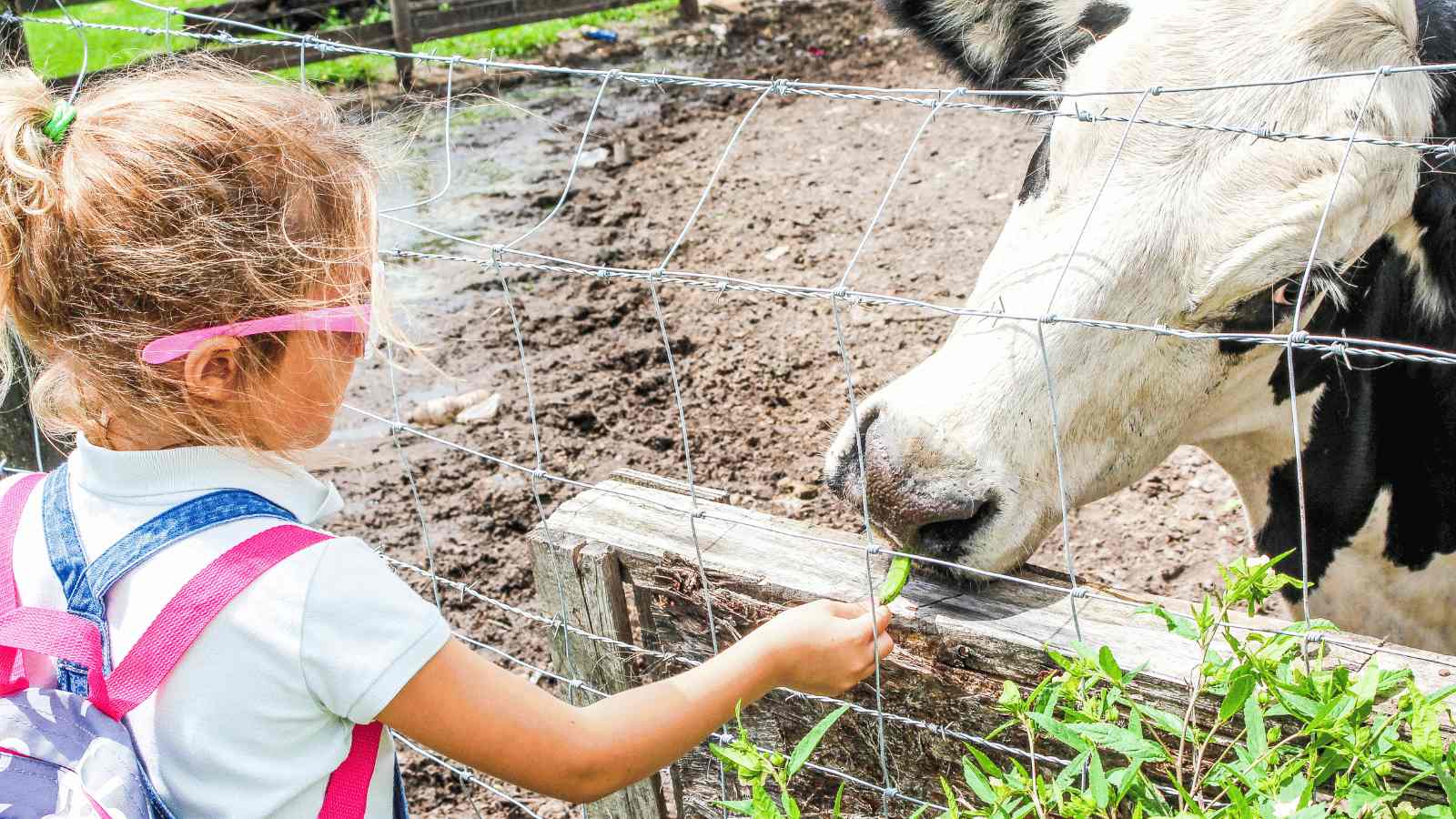
Field trips are momentous times in a preschooler’s life. Preschool field trips allow children to enjoy a change of scenery and spend time outside the classroom doing more hands-on learning.
In addition to the memories children create on field trips, they’re a valuable opportunity for educators to reinforce lessons. With the right planning and preparation, field trips for children can be an engaging, educational day for all involved.
Why are preschool field trips important?
Field trips are more than extra-curricular activities. They can be an integral part of a child’s early education. Preschool field trips afford many substantial benefits for children:
Broadens their education
Children are exposed to only so much in a classroom setting. Field trips allow children to get a richer picture of educational subjects by observing them outside of books, lessons, or videos.
Exposure to real-life experiences
In preschool, children are developing their understanding of life and the world around them. Field trips expose them to everyday life in a setting where their teacher can help them connect what they’re learning to what happens in the real places in their community. Experiential learning (authentic, first-hand, sensory-based learning) through field trips is a way for children to reflect on and apply their new knowledge.
Research shows academic improvement
Studies support the idea that field trips have real effects on a child’s education. Field trips are linked to improvements in academic performance. According to a study on youth educational trips by the Wagner Group and the U.S. Travel Association, adults who took educational trips when they were younger…
- Had better grades (59% of study respondents)
- Graduated from high school at a higher rate (95% of study respondents)
- Reported that educational trips had a positive impact on their education (89% of study respondents)
Expands their world
Field trips allow all children to experience more of the world. Whether they live in a busy city or a rural town, field trips introduce children to experiences and environments they may not have access to otherwise. Preschool teachers have the opportunity to make a child’s world a little larger with each field trip and show them new places, people, and adventures.
How to plan and prepare for preschool field trips
A lot of preparation goes into a successful field trip. For teachers and administrators, there are people, places, and schedules to coordinate weeks or months in advance.
Consider the below areas as you plan your trip:
Teaching moments
Sometimes preschool field trips are planned around a specific topic the class has been covering. Sometimes trips are simply a good learning opportunity that you’ll weave a lesson into. No matter which scenario you’re in as a teacher, it’s helpful to have your notes and activities prepared in advance.
How many adult chaperones will you need for the field trip? When you’re planning field trips for kids, it’s crucial to have a confirmed, appropriate number of chaperones based on the number of children attending.
You can request family volunteers or set up a rotating schedule so families can plan ahead. Consider offering incentives like free lunches or gift cards and remind them it’s a great opportunity to have a meaningful experience with their child and get to know the other children and families in your program.
Plan to bring extra snacks in case meal times run late. Prepare to answer questions from parents about whether to pack a lunch or work out an eating arrangement at the field trip location. If you'll be serving meals on the field trip, prepare the food before and determine how you will transport it. Consider packing a cooler for any perishable foods that need to be kept cold, and pack plenty of water if there is no water available at your destination.
Transportation
Some preschool policies require that school vehicles are used for field trips. Before the trip, determine transportation needs, such as how many vans or buses will be needed and if parents are permitted to drive.
If there’s a cost associated with the trip, how will you secure funds from the school or handle payments from parents? Use your communication platforms to alert parents of any expenses they’ll need to cover as far in advance as possible.
Sometimes drop-off and pick-up schedules can be impacted by field trips. Create an agenda and itinerary that shows where the class will be and breaks down how long you’ll be at each location. This helps parents plan their day and gives school administration information they would need in an emergency.
If any children have medication, medical equipment, or anything else that needs to be on hand for them, it needs to be accounted for in field trip planning. Bring any health and safety documents such as an accurate roster to count the children and emergency contact information. Teachers should also pack first aid kits and antibacterial hand wipes if there is no access to clean running water on your trip.
Families' participation on field trips is a great way to include them in the curriculum and share a day in the life of the class. Check out our calendar template to keep families up-to-date with all major school events and spark new ideas for family engagement year-round.

Field trip safety tips
Taking young children on a field trip can be an overwhelming experience without the right preparation. Field trips are very exciting, so be aware that the children may have extra energy or be more distracted. To have a fun, safe, and smooth trip, focus on safety measures before and during the excursion.
Before the field trip
- Review the schedule with the children and tell them what to expect
- Give children safety guidelines and procedures to follow
- Assign pairs or small groups for headcount checks
- Involve children in checking the field trip supply checklist
- Instruct children to wear bright clothes or a certain color to make them easy to spot
- Prepare and bring a first aid kit
During the field trip
- Do headcount checks frequently and always before leaving or entering any location
- Follow pedestrian rules carefully when walking such as using sidewalks and crosswalks and only crossing the street when traffic signals say it is safe
- For traveling by bus or van, check every seat before exiting
- Ensure children understand and follow the security and safety measures of the field trip location
- Continue practicing basic hygiene, such as washing hands or using hand wipes before eating
- Keep a copy of emergency contact lists with you at all times
- Take bathroom breaks together as a group
Field trip ideas for preschoolers
Choosing where to take the children in your preschool class is one of the most exciting parts of field trip planning. Here are 20 engaging and educational field trip ideas for preschoolers:
Apple orchards and pumpkin patches can show children how these foods are grown and offer a truly hands-on education as they pick their own.
Nature walk
Nature walks are an educational adventure that allow children to discover various plants, leaves, critters, and trees. It’s also great physical activity!
Farmer’s markets
A field trip to the local farmer’s market or grocery store can be an opportunity to teach children lessons about nutrition and where their food comes from.
Many children’s books are full of stories and illustrations of sea creatures, so the aquarium is sure to be a hit with preschoolers. They’ll get a chance to see these creatures up close and learn more about them.
A local bakery is another food-focused field trip that supports a small business and allows children to see how some of their favorite sweet treats are created.
Zoos are a common preschool class favorite! Children can visit and hear facts about a wide variety of animals, including birds, mammals, and reptiles.
Local library
Libraries are often a familiar place for young children, but a preschool field trip to the library gives children a chance to learn details about what a librarian does and the many types of books available to them.
Fire station
Preschoolers tend to love fire trucks. Use a field trip to a fire station to teach them about the work that happens behind the scenes and age-appropriate fire safety tips.
Local events
Sometimes the best educational events don’t need to be booked—they’re already happening in your community! From holiday celebrations and parades to the annual fair, local events can provide children with a wealth of learning opportunities.
Farmers have so much they can teach young children, from lessons about the way food is grown to how the animals are raised.
Children’s museum
Museums that cater specifically to young children are educational and interactive places that are ideal for preschool field trips. They also tend to change exhibits regularly, which means they’re a great choice for multiple trips.
Home improvement store
Show children how chairs, tables, and other items they use on a daily basis are built. Another way to do this is to find a local builder with a small shop who’s willing to give a workshop tour and demonstration.
If you have a child-friendly state park nearby, they make excellent field trip destinations. State parks are a beautiful place to teach about the great outdoors and ways to protect and respect our planet.
Recycling center
Teach children the importance of recycling and how everyday items like plastic water bottles and aluminum soda cans are recycled.
Local ponds are perfect for a low-cost, science and nature focused field trip. They’re often home to frogs, ducks, and aquatic plants, making great lesson topics for preschool children.
Around town scavenger hunt
Teach children about where they live with a scavenger hunt in your community. Downtown areas are usually ideal locations for this field trip activity.
Expose children to the performing arts with a preschool field trip to the local theater. This trip can teach them about storytelling on the stage, theater etiquette, and stage acting as a career.
Train station
Learning about different types of transportation expands children’s minds and view of the world. Add in a train ride to make it both engaging and educational!
Botanical garden
Botanical gardens are a stunning environment to teach children about the beauty of nature and various types of plant life.
Historic monuments
A field trip to an age-appropriate historic site can provide early lessons on important historical figures and events.
Post-field trip actions and education
Get the most out of your day away from the classroom by following up with children and their families after your field trip. Parents will appreciate knowing what their children learned and children will get a chance to relive the best moments of their trip.
To update families, consider including a brief summary of your field trip in your preschool newsletter . Ask children to share their favorite parts of the trip and include photos!
Plan a memorable outing
There are plenty of details to consider and plan when it comes to executing preschool field trips. Taking a trip is a great opportunity for educators to build upon everything their children are learning in the classroom and engage them in hands-on, memorable experiences.
Calendar Template for Early Education Programs
A template for creating a school year calendar for families.

Subscribe to the brightwheel blog
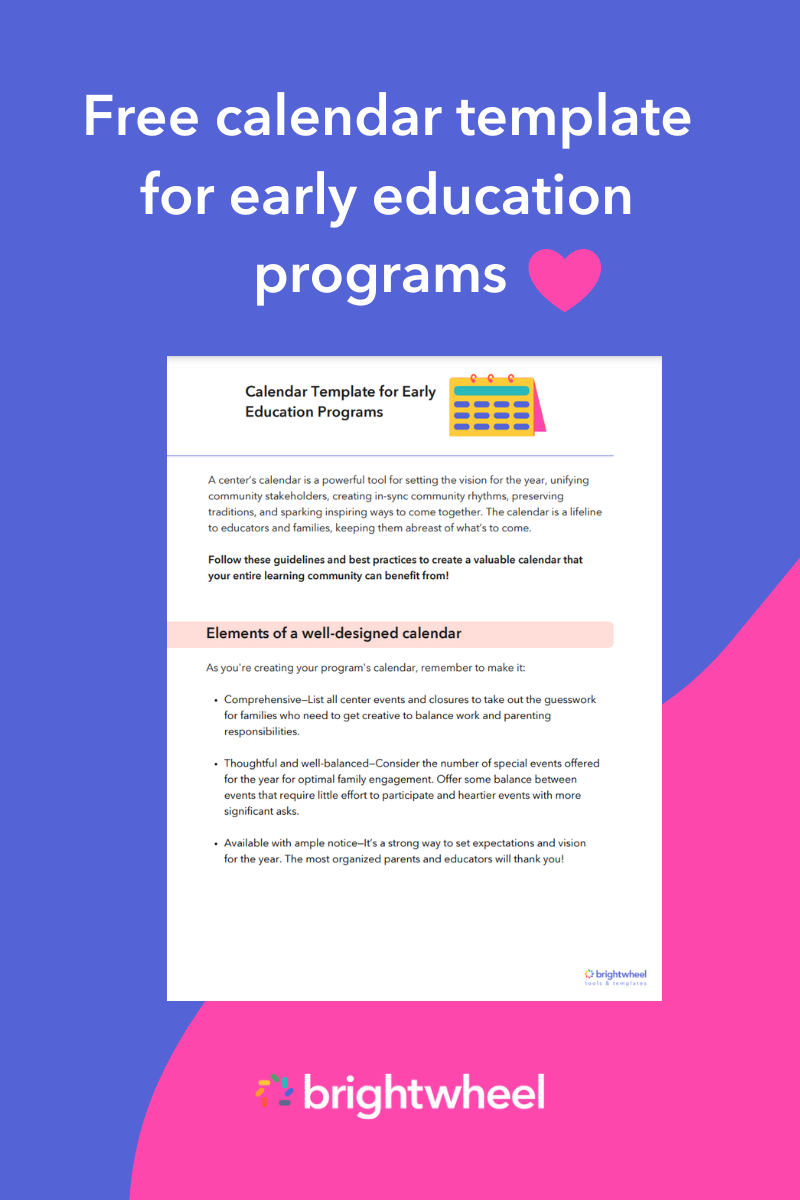
Recent Posts
- How to Plan a Successful Fundraiser for Your Preschool June 21, 2024
- Navigating Childcare Grants and Other Funding Resources in Wyoming June 21, 2024
- The Importance of Childcare Staff Training for Educators June 21, 2024
- Navigating Childcare Grants and Other Funding Resources in West Virginia June 21, 2024
- Curriculum Planning 101: Lesson Plans for Infants, Toddlers, and Preschoolers June 21, 2024
Posts by Tag
- Running a business (219)
- Child development (164)
- Curriculum (84)
- Financial health (68)
- Small business funding (55)
- Staff development (47)
- Family engagement (40)
- COVID-19 (30)
- Technology (27)
- Family communications (15)
- Staff retention (15)
- ECE career growth (13)
- For Parents (10)
- Diversity and inclusion (9)
- Enrollment (7)
- Staff appreciation (7)
- Marketing (6)
- Public policy (6)
- Staff hiring (5)
- ECE current events (4)
- Family retention (4)
- Salary guides (4)
- Leadership (2)
Creating Effective Field Trip Safety Policies

Field trips have long been an exciting part of the educational experience, offering students a break from the classroom routine and a chance to explore the world beyond their textbooks. These educational outings are also linked to improvements in students’ academic performance , social-emotional development, and long-term career prospects. Regardless of gender, ethnicity, or socioeconomic status, students who take part in school trips are gaining meaningful benefits.
With that being said, there are many field trip safety concerns and potential risks associated. This emphasizes the importance of well-structured policies and procedures to ensure that students and accompanying adults can enjoy their outings with peace of mind.
In this blog post, we will discuss the steps to create effective safety policies for field trips including examples of safety rules and safety checklists.
Conduct a Thorough Risk Assessment
Before you can create effective safety policies, it’s crucial to first identify potential risks and hazards associated with trips off school grounds. This process involves the examination of factors such as transportation, location, activities, potential emergencies, student abilities, and more. By pinpointing potential dangers in advance, strategies can be developed to reduce these risks.
When conducting a risk assessment, consider the following key areas:
- Transportation: Assess the safety of the various modes of transportation including buses, walking, or other means.
- Location: Evaluate the climate, terrain, accessibility, and availability of healthcare facilities in the chosen destinations. Keep in mind unexpected weather changes.
- Activities: Examine the equipment used during activities and assess the physical challenges involved. For example, consider the potential risks associated with contact with animals.
- Potential Emergencies: Identify potential emergencies such as slips, trips, falls, bus accidents, dangerous environments, or insufficient security measures.
- Student Ability: Consider the physical capabilities, medical conditions, experience, and age of the students participating in field trips.
Assess the level of risk based on the likelihood or probability of the risk occurring and the possible consequences. This will help guide and prioritize risk management efforts.
While complete elimination of risk is often impossible, school field trip safety policies should provide assurance that all reasonable care and sensible preparatory arrangements have been made to manage potential hazards.
Adapt Field Trip Safety Policy and Procedures Based on Risk Assessment
Once the risks are identified through the risk assessment, safety policies should be adapted accordingly. This means addressing each potential risk with specific measures. Some examples of risk management strategies include the following:
- Having emergency contact information readily available.
- Ensuring appropriate insurance coverage.
- Designating trip leaders and chaperones.
- Setting aside emergency funds.
- Establishing adult-to-student ratios (with lower ratios being preferable, such as one adult per 4-6 children).
- Outlining emergency procedures.
- Setting age requirements for participation.
- Maintaining first aid kits.
- Specifying dress codes.
- Keeping families informed about trip details.
Schools are obligated to carry out suitable and sufficient precautions in terms of supervision, protection, and training before, during, and after the trip.
The following sections include a more in-depth explanation of effective safety policies in the top areas related to school field trips.
Train Staff on their Responsibilities
One crucial detail in effective field trip safety policies is the training and responsibilities of staff. Teachers and staff involved in field trips should always review school policies and procedures well in advance of the excursion. Being familiar with these guidelines ensures that everyone is on the same page regarding safety protocols and expectations.
Staff training can include the following:
- CPR and First Aid certification.
- Crisis management training.
- Familiarity with emergency protocols.
- How to identify potential hazards related to the trip’s destination and activities.
- Responding appropriately in emergency situations.
It is advisable to request that volunteers obtain CPR and First Aid certification. This extra layer of preparedness can be invaluable in ensuring the safety of all participants.
Another important responsibility of school staff is effective communication:
- Administrators should communicate with staff beforehand on safety policies and protocols.
- Teachers and staff should maintain communication before, during, and after the field trip with students, families, and school administrators. Open channels of communication should be created to ensure everyone is informed and prepared.
- Teachers and chaperones should establish and communicate clear behavioral expectations and guidelines for students to follow during the trip.
Make Mandated Staff Training Easy
Our online teacher and staff compliance training gives your team the opportunity to take training wherever and whenever it’s convenient for them!
Generate Field Trip Emergency Preparedness and Response Plans
One of the cornerstones of effective safety policies for school field trips is a comprehensive emergency preparedness and response plan. This plan should be an integral part of staff training and responsibilities. Teachers and chaperones must be skilled in emergency procedures, and everyone should know their roles and responsibilities. The following includes examples of what should be included in emergency preparedness and response plans:
- Teachers and staff should carry a well-stocked first aid kit along with essential items such as bottled water, sunscreen, a working cell phone, any emergency medications students may need, a list of emergency phone numbers, and parent/guardian contact information.
- Following any medical assistance, if needed, teachers should contact the student’s parents/guardians as soon as possible to keep them informed. Documenting the incident through an accident report is also essential for maintaining records and assessing the effectiveness of the response.
- Teachers and chaperones should be made aware of the prevention of lost or missing students. Matching t-shirts or bracelets can help identify students quickly. Clear instructions should be given to students regarding where and when to meet up, emphasizing the importance of always staying with their assigned buddies. Teachers and chaperones should maintain a roster and check students against it multiple times throughout the day to ensure that no one is left behind.
Emergency preparedness, clear procedures, and prevention measures all contribute to a safer and more enjoyable trip for everyone involved.
Quickly Report Student Accidents
Automate the reporting, tracking and management of accidents, including documenting if first aid was administered, investigations, witness statements, and communicating with all key personnel.
Medical Considerations and Consent Forms for Field Trips
Before embarking on any field trip, it’s essential to collect medical information and signed consent forms from parents/guardians. This step is not just a formality; it’s a vital component of ensuring the safety of every student. Medical information helps educators and chaperones be prepared for any unexpected situations that may arise during the trip. Including this as a safety policy will guarantee its completion.
Consent forms serve as a legal agreement between the school and parents/guardians, outlining the details of the trip and giving them peace of mind about their child’s participation. The forms should provide a comprehensive overview of the trip, including its cost, specific clothing requirements (such as sunscreen, raincoats, or closed-toe shoes), lunch details, and transportation arrangements.
For students with allergies, especially severe ones, it’s crucial to make all participants aware of these allergies so they can respond quickly in case of an emergency. Additionally, any necessary medications should be properly labeled with the student’s name, medication name, dosage, and the time it should be administered.
No child should be excluded from field trips due to their medical condition. Accommodations should be considered and made in advance.
School Field Trips Transportation Safety Measures
Transportation is often a significant aspect of school field trips, and addressing safety considerations related to it is vital. School buses are often the chosen mode of transportation for field trips due to their safety record. However, it’s crucial for everyone involved, from drivers to parents and students, to understand school bus safety.
The qualifications of the drivers operating the vehicles are critical. It should be ensured that buses or cars used for transportation are driven by trusted adults who are responsible and qualified drivers. Drivers should not only be licensed and experienced but also familiar with the specific route and the needs of the students on board. Including regular background checks and training in your safety policies can help maintain the quality and reliability of the drivers.
There should be contingency plans for transportation-related emergencies such as vehicle breakdowns or accidents. These plans should outline:
- Steps to take during a vehicle breakdown or accident.
- Communication protocols.
- Evacuation procedures.
- How to contact emergency services if necessary.
- Having a backup plan in case a vehicle breaks down.
- Plan for students with disabilities or special needs .
Furthermore, schools must ensure that an adult is present in the vehicle whenever children are on board. No child should ever be left unattended. Regular inspections of the vehicle should also be conducted after each trip to ensure no child has been inadvertently left behind.
By having these plans in place beforehand, schools can help ensure that all students reach their destination safely and securely.
Gather Post-Trip Evaluations and Feedback
Accidents can occur even with the most comprehensive safety protocols in place, and when they do, it’s essential not to assign blame but instead focus on improving the system. Post-trip evaluations provide a platform for schools and organizations to review the incident objectively, dissect the events leading up to it, and understand the root causes. By doing so, schools can avoid making the same mistakes in the future and continually refine their safety protocols. The goal is not to point fingers but to create an environment where learning from accidents leads to safer field trip experiences.
One of the most valuable aspects of post-trip evaluations is the input from those directly involved: teachers, students, and parents/guardians. Each of these stakeholders brings a unique perspective to the table.
- Teachers, who are responsible for organizing and supervising the field trip, can provide insights into logistical challenges, communication gaps, or unexpected issues that may have arisen during the trip.
- Students can share their observations about their own behavior and the behavior of their peers, helping educators and organizers understand potential risks or lapses in safety awareness.
- Parents, being concerned guardians, can offer valuable feedback from an outsider’s perspective, pinpointing areas where safety could be improved.
The importance of conducting a post-trip evaluation cannot be overstated. It’s not just about reacting to accidents; it’s about proactively seeking opportunities to enhance safety policies and procedures for future field trips. By involving all participants in this process, schools foster a culture of collaboration and continuous improvement, ensuring that each field trip is safer and more enriching for all involved.
As we’ve explored in this blog post, ensuring the safety of students, and accompanying adults during field trips must remain a top priority.
To recap the key points covered:
- We’ve highlighted the need to establish thorough safety policies and procedures for field trips. These policies should encompass all aspects of the excursion, from transportation and supervision to emergency response plans.
- We’ve stressed the significance of continuous improvement in safety protocols. The ever-evolving nature of risks and challenges means that safety policies should never remain static. Regularly reviewing and updating these protocols ensures that schools stay ahead of potential hazards and can adapt to new circumstances.
Comprehensive safety policies, diligent supervision, and adaptability are the cornerstones of a successful and secure field trip experience. By prioritizing student safety and continually refining safety protocols, educational institutions can provide students with the best of both worlds: valuable educational experiences and peace of mind for parents and educators alike.
Privacy Overview
We're excited to announce that Raptor Technologies has acquired PublicSchoolWORKS!

Safety-Ideas for Preschoolers' Field-Trips
Field trips are a fun part of every child’s education. They get the opportunity to visit interesting places with their peers and learn something new together. Leaving a classroom’s safety comes with a number of risks which is why it is important to keep a few safety ideas in mind for preschoolers’ field trip.
Have a talk
Before you head out on your field trip, talk to your students about safety. It is important to discuss the importance of not wandering off, not talking to strangers and assure them that you are there if they need anything.
Make them easy to spot
You should make sure that the children wear brightly-colored clothes. This will make them stand out and ensure that you can easily spot them in any type of environment, whether they are outdoors at a park or inside at a children’s museum.
Choose parent chaperones wisely
When you go on a field trip, there should be as many adult eyes as possible – you cannot be everywhere all at once by yourself. While choosing a chaperone, pick a parent who is responsible, mature and firm.
Count heads often
The last thing you want to do is lose a student, so count heads as often as you can. This will help ensure that everyone is accounted for.
Assign each student a partner
Get your students in pairs by assigning each of them a partner. This helps keep things more organized which is important for safety. It will also give them a sense of responsibility.
Research the Destination Before You Initiate the Field Trip
Make certain that the location you've picked is safe and acceptable for small children. If possible, go to the location before announcing the trip. Examine the location for possible risks such as falls, entrapments, choking/poisoning hazards, and so on.
Bring a First Aid Kit During the Trip
It will be beneficial for you to assemble a first aid kit during the trip for kids’ safety. Assign one staff member to always carry it in a backpack.
The contents should include:
- Disposable gloves
- Bandages
- Gauze pads/rolls and bandage tapes
- Scissors and tweezers
- Eye dressing
- Water bottle
- Thermometer
- Soap or disposable hand wipes
- Emergency medications
- List of emergency numbers and parent contact information
Also, have information about any unique health needs or allergies of participating children with you as well.
Prepare a Food Plan that Is Safe and Nutritious
Make sure to prepare food safely if your trip includes a meal or snack. Children's ability to carry their own backpacks or lunch bags will vary according to how old they are. Adults should carry a nutritious snack and offer it to the kids at the proper times during the trip. Perishable products are not ideal since they must be refrigerated or packed with ice. In case your destination doesn’t have drinking fountains, make sure everyone brings water.
Maintain Basic Hygiene
Even if you are not at your workplace, washing your hands before eating is necessary. Make sure that everyone washes their hands before they start eating. If you don't have access to clean running water on your journey, you might need to bring hand wipes.
With these tips, you can make sure that you and your preschoolers have a fun field trip. You can give them a day of fun and learning without any worries.
Related Post: 4 Activities That Promote Teamwork Among Preschoolers
Dorothy hastings.
This entry was posted in Preschool and tagged preschool
Related Posts
Should PreSchoolers Be Exposed to Online Media?
7 Amazing Tips to Prepare Your Child for Success in Preschool
Preschooler Parenting: The Perfect Game Plan for You
Comments are closed
Field Trip Safety Tips
Taking a day trip with young children can provide wonderful learning opportunities to enrich and extend your curriculum—but day trips are not for the faint of heart! However, with careful planning, ad- equate staffing and a spirit of adventure, adults and children can safely enjoy outings. Below is important information to consider when planning and making field trips with young children.
Research your destination before you take a trip
Before selecting a field trip site, providers/teachers should consider why they are taking children on this field trip. Is this an activity that can only take place away from the child care program, such as a visit to a children’s theater? Or could this experience occur just as well at the program site? For example, if you want children to learn about firefighters, you can visit the local fire station or instead you might ask your local fire department to come to your site with their equipment and a firetruck.
Be sure the destination you have chosen is safe and appropriate for young children. If possible, visit the site in advance of announcing the trip. Look at the site from a safety perspective, such as potential falls, entrapments, choking/poisoning hazards, etc. Remember, destinations such as parks, zoos, or land- marks are usually not “child-proofed.” Talk to others who have visited already, preferably those who have gone there with young children.
Find out if there are accessible restrooms and a sup- ply of running water. What are the best times to visit to avoid large crowds? Are there generally many other groups of children at the same time? Are there hazards such as unfenced bodies of water, loose animals, poisonous plants, or stairs without secure railings? Does the trip require a long walk through a parking lot or along a busy street? Gathering this type of information ahead of time will help you choose an appropriate destination.
Obtain written consent for each participating child
A permission slip specific to the trip should be dis- tributed to families ahead of time, to be completed by the parents or guardians. The permission slip should include details about the trip, the date on which it will occur, the destination and its address, the mode(s) of transportation to be used, and the estimated times of the group’s departure and return.
In addition to permission to attend, the permission slip should also include consent for emergency care if required during the trip. Parents must provide contact information so that the parent or a desig- nated contact can be reached immediately to assume responsibility in the event of an emergency. Make sure the information you take with you is cur- rent. Only children whose parents have signed and returned a permission slip should participate.
Maintain staffing requirements
During travel and at your destination, maintain the appropriate ratio of staff to children at all times. Parents should be welcome, and having additional adults around will certainly make the logistics of travel easier. However, parentparticipation must comply with current licensing regulations, and parent volunteers are not to be counted as substitutes for trained child care staff.
Use child safety restraints
If your trip requires traveling in cars or vans, each participating child must travel in a car safety seat or booster that is appropriate for their age and weight. Preferably, parents will provide a seat that is already set up to fit the child to minimize the amount of time spent fidgeting and adjusting straps and buckles on the day of the trip.
Older children should buckle the lap belt and shoul- der belt. Never double-buckle children in seat belts; each child should have his or her own seat belt to provide the best possible protection.
Bring important health and safety materials with you
Assemble a first aid kit and designate one staff mem- ber to carry it in a backpack or fanny pack. Contents should include:
- Disposable nonporous gloves
- Adhesive bandages of assorted shapes/sizes
- Gauze pads/rolls and bandage tape
- Scissors and tweezers
- Thermometer (not made of glass)
- Eye dressing
- Bottled water
- Small splints
- Soap or disposable hand wipes
- Plastic bags for disposal of soiled materials
- A simple first aid guide or chart
- Any emergency medications potentially neededby participants
- List of emergency phone numbers, parentcontact information, and poison control numbers
- A functional cell phone or coins for pay phones
- A pen or pencil and a small notepad, for takingdown emergency notes or instructions
In addition, carry with you the care plans describing any special health needs of participating children. For example, if a participating child has asthma, the kit should contain the care plan as well as any medications or equipment he or she may need. Transport medications in a back pack, and keep them at the appropriate temperature. Check medications for special storage instructions (for example, does it need to be refrigerated or kept out of sunlight?). Ice packs may be used if medications need to be kept cool. Do not leave medications in vehicles as they can reach high temperatures in a short time.Plan for safe and nutritious foodIf your trip will include a meal or snack, be sure to prepare food safely. Perishable items are generally not practical, since they require refrigeration or pack- ing in ice. If the destination doesn’t offer drinking fountains, participants will need to carry water to drink to prevent dehydration. The ability of children to carry their own backpacks or lunch sacks will de- pend on their ages and developmental levels. At the very least, for a short trip, a nutritious snack should be carried by the adults and distributed to the chil- dren at an appropriate time.
Maintain basic hygiene
Practice hand washing prior to eating, even when you are away from your site. It may be necessary to carry hand sanitizer to accomplish this, if there is no access to clean running water on your trip.
Identifying labels, and apparel
Identify the children in your group with a special sticker, or even matching tee-shirts. Ready visual identification of the children in your group is espe- cially helpful where there are many groups of young children present.
Bring a roster sheet of participants
Bring a roster sheet of participants. An accurate list of children who have been signed in on the day of the trip is crucial. Use this list to conduct frequent exact head counts. Count the children as you leave the program, once they are in the vehicle(s), as they exit the vehicle(s), and when they get into the designated building or area. The roster should also allow for a parent or designated contact to sign out a child during the trip, if necessary.

Field Trips for Preschoolers: How to Plan and Prepare for a Memorable Experience
- May 15, 2023

The purpose of this guide is to serve as a roadmap for educators and parents alike, helping them plan and prepare for preschool field trips that leave a lasting impression. We understand the significance of these excursions in fostering social, emotional, and cognitive development in young children. Whether you’re an enthusiastic educator or a devoted parent, this outline will equip you with the necessary tools and insights to create an unforgettable field trip experience.
Benefits of Field Trips for Preschoolers
Field trips are more than just fun outings for preschoolers; they offer a multitude of educational and developmental benefits that contribute to their overall growth. These excursions provide an immersive learning experience, allowing children to explore, discover, and make meaningful connections with the world around them. Let’s explore the numerous advantages that field trips offer to preschoolers:
- Experiential Learning: Field trips for preschoolers provide hands-on learning opportunities beyond traditional classrooms, enhancing children’s understanding of various subjects.
- Stimulated Imagination: Field trips expose preschoolers to new sights, sounds, and textures, stimulating their senses and inspiring creativity.
- Social and Emotional Development: Field trips encourage children to interact with peers and adults in different settings, enhancing communication and cooperation skills.
- Appreciation for Diversity: Field trips expose preschoolers to different cultures, traditions, and perspectives, promoting tolerance and empathy.
- Language Development: Field trips for preschoolers provide rich opportunities for language development through active listening, communication, and conversation.
- Sensory and Motor Development: Field trips often involve physical activities that promote gross motor skills , balance, coordination, and spatial awareness.
Selecting the Ideal Field Trip Destination
Selecting the perfect field trip destination for preschoolers requires careful consideration to ensure an engaging and educational experience. The chosen destination should align with the curriculum, cater to their developmental needs, and spark their curiosity. Here are some essential factors to consider when selecting the ideal field trip destination:
- Curriculum Alignment: The field trip should complement the curriculum and learning objectives of the preschool program . Identify the concepts or topics being covered and choose a destination that provides relevant educational opportunities. For example, if the class is learning about animals, visiting a local zoo or a nature reserve would be an excellent choice to deepen their understanding.
- Age-Appropriate and Engaging: Preschoolers have unique interests and abilities. Select a destination that caters to their age group, offering activities and exhibits that are accessible and engaging. Look for interactive exhibits, hands-on learning experiences, and age-appropriate demonstrations. Consider destinations such as children’s art museums, science centers, botanical gardens, or farms, often providing tailored experiences for young learners.
- Interest and Curiosity: Tap into children’s natural curiosity by choosing a field trip destination that aligns with their interests. Talk to the children and involve them in the decision-making process. Discover their passions, whether dinosaurs, space, art, or nature, and select a destination that will captivate their imagination. When children are excited about the subject matter, their engagement and learning are greatly enhanced.
Additionally, ensure that the chosen destination prioritizes safety and accessibility for preschoolers. Evaluate the venue’s safety measures, including appropriate staff-to-child ratios, well-maintained facilities, and clear emergency procedures. Consider factors such as wheelchair accessibility, restroom availability, and ease of movement for children with diverse abilities.
Tips to Plan and Prepare for a Memorable Experience
Once you and your child select the perfect field trip destination , the real excitement begins! But how do you ensure a truly memorable experience? With these expert tips and practical advice, you’ll discover how to plan and prepare for a field trip that will create lasting memories and ignite a love for exploration.
1. Make Them Feel Excited
Creating anticipation and excitement for a field trip is essential to ensure your preschooler has a memorable experience. You can set the stage for a day filled with wonder and adventure by igniting their curiosity and enthusiasm. One way to make them feel excited is by involving them in planning. Engage your child in discussions about the destination, its unique features, and what they can expect to see and do there. Watch videos or read books related to the field trip to spark their imagination and build excitement.
Additionally, you can create a countdown calendar or a visual representation of the upcoming trip, marking off the days until the big adventure. Share stories and anecdotes about your field trip experiences, capturing their attention and fueling their enthusiasm. By actively involving your little one in the preparation and building their anticipation, you’ll cultivate a sense of excitement that will make the field trip even more enjoyable and memorable for them.
2. Be Prepared the Night Before the Trip
The night before your preschooler’s field trip is the ideal time to make sure you have everything in order for a successful outing. Here’s a handy checklist to help you stay organized:
- Prepare a small bag with any necessary medications your child may need during the trip.
- Pack a variety of healthy snacks your little one enjoys, ensuring they have enough energy throughout the day.
- Don’t forget essentials like water bottles, sunscreen, and a hat to protect against the sun.
- Check the weather forecast and choose appropriate clothing layers to comfort your child.
- Ensure you have any required permission slips or medical information securely packed.
By gathering these items and completing the necessary preparations the night before, you can start the field trip day with peace of mind, knowing that you’re fully prepared for a memorable and enjoyable experience with your preschooler.
3. Pick the Right Clothes
Choosing the appropriate clothing for your preschooler’s field trip is crucial to ensure their comfort and enjoyment throughout the day. Here are some tips to help you pick the right clothes for the outing:
- Consider the weather: Check the forecast and dress your child accordingly. If it’s sunny, opt for lightweight, breathable fabrics and don’t forget to apply sunscreen. For cooler days, dress them in layers so they can adjust their clothing as needed.
- Prioritize comfort: Select clothes that allow your child to move freely and comfortably. Avoid tight or restrictive clothing that may hinder their movements or cause discomfort. Opt for stretchy materials and comfortable shoes suitable for walking and exploring.
- Be prepared for activities: Take into account the activities planned during the field trip. If there will be messy or outdoor activities, consider clothing that can withstand some dirt or stains. Packing an extra set of clothes in case of spills or accidents is also a good idea.
By choosing weather-appropriate, comfortable, and activity-ready clothing, you can ensure that your preschooler is dressed for a successful and enjoyable field trip. Remember, their comfort and ease of movement will contribute to their overall experience and allow them to fully engage in the activities and discoveries of the day.

4. Encourage Your Little One to Ask Questions
One of the best ways to enhance your preschooler’s field trip experience is by encouraging children to ask questions . Curiosity is a powerful tool for learning and exploration, and by fostering a sense of inquiry, you can help your child make the most of their educational adventure.
Remind your little one that there are no silly or wrong questions. Encourage them to ask about things they find interesting or don’t fully understand. Encourage active engagement with tour guides, educators, or experts at the destination, as they can provide valuable insights and expand your child’s knowledge. By asking questions, your preschooler can deepen their understanding, develop critical thinking skills, and gain a deeper appreciation for the world around them. So, foster their curiosity and let their questions guide them on a journey of discovery during the field trip.
5. Ensure Your Kid is Physically Ready
Before embarking on a field trip, it’s important to ensure that your preschooler is physically ready for the day ahead. Here are some key points to consider:
- A good night’s sleep: Make sure your child gets adequate rest the night before the trip. Sufficient sleep will ensure they have the energy and focus needed for an enjoyable experience.
- Nourishing breakfast: Start the day with a nutritious breakfast to fuel your child’s body and mind. Include foods that provide sustained energy, such as whole grains, fruits, and protein-rich options like yogurt or eggs.
- Stay hydrated: Pack a water bottle for your child to keep them hydrated throughout the trip. Hydration is crucial for maintaining energy levels and overall well-being, especially during physical activities.
By prioritizing your child’s physical well-being, you can help them stay alert, energized, and ready to fully engage in the field trip experience. A well-rested and nourished preschooler will be better equipped to absorb new information, actively participate in activities, and maximize the learning opportunities presented during the outing.
6. Ask Your Little One to Take Notes
Encouraging your child to take notes during a field trip can be a fun and effective way to help them remember the experience. Taking notes allows your child to document important details, reflect on their observations, and engage with the learning material in a more active way.
Teach your child about the importance of note-taking a day before the trip. Share how your field notes helped you remember your experiences and discoveries from your field trips. Encourage your child to use a notebook or a smartphone app to record their thoughts, observations, and questions. They can also take photos or make sketches to help capture the memories of the day. By taking notes, your little one can create a personal record of their field trip, review the material later, and share their experiences with others.
7. Check With All The Norms Set by The School
In order to ensure a hassle-free field trip experience for your preschooler, it’s crucial to familiarize yourself with all the norms and guidelines set by the school. Paying attention to these details can help prevent unnecessary complications and ensure a positive experience for your child. Here are some important points to consider:
First, check for any dress code requirements. Some schools may have specific guidelines regarding appropriate attire for field trips. Adhering to these guidelines ensures that your child is dressed appropriately and avoids any potential scolding or discomfort during the trip.
Additionally, be aware of any rules regarding gadgets or electronics. If the school has a policy against bringing gadgets on field trips, it’s important to respect this rule. Providing your child with gadgets when not allowed can hinder their engagement with the experience and may lead to disciplinary action.
Lastly, be mindful of any other specific instructions or guidelines provided by the school. This may include rules regarding food or snacks, behavior expectations, or any specific items that your child should bring or leave behind. By checking with the school and following these norms, you can help ensure a smooth and enjoyable field trip for your preschooler and their classmates.
8. Managing Cash When Traveling Alone
When your child is on a field trip, it’s important to ensure they have the necessary funds and know how to manage their money responsibly. Here are some tips to help them with cash management:
First, provide your child with the appropriate amount of cash for the trip. Discuss with them the importance of budgeting and making wise spending decisions. Encourage them to prioritize essential items like meals or souvenirs they want.
Consider giving your child a small wallet or pouch to keep their cash secure. Teach them about the importance of keeping their money safe and hidden. Remind them not to publicly share their financial information or display large amounts of cash.
9. Make Sure Your Child Save His Contact Number
It’s essential to ensure that your child has your contact number readily available when they’re on a field trip. By having this information, the teacher-in-charge can easily reach you in case of any issues or emergencies. Here’s what you can do to ensure your child has your contact number:
Encourage your child to memorize your contact number. Practice reciting it together until they feel confident in remembering it. Alternatively, you can write the number down on a small note and ask them to keep it in a safe place, such as their pocket or backpack.
Additionally, consider providing your child with a wristband or ID tag that includes your contact information. This way, your child will have your details readily accessible in case they need assistance or support during the field trip.
10. Inform the Teacher About Your Little One’s Circumstances
When your child has special medical circumstances or specific needs, it’s important to communicate this information to the teacher in charge of the field trip. By doing so, you can provide essential details and ensure that your child receives appropriate care and support. Here’s why it’s crucial to inform the teacher:
If your child requires specific medications or has medical conditions, informing the teacher allows them to be aware of the situation. This way, the teacher can provide reminders for medication timings or be prepared to handle any medical emergencies that may arise during the field trip.
In addition to medical circumstances, informing the teacher about any other relevant details regarding your child’s needs or preferences can contribute to a more inclusive and comfortable experience. Whether it’s dietary restrictions, allergies, or behavioral considerations, sharing this information allows the teacher to make necessary accommodations and ensure your child’s well-being throughout the trip.
Final Thoughts
Planning and preparing for field trips for preschoolers can be an exciting and enriching experience. By following the steps outlined in this guide, you can ensure a memorable outing for your little one and their classmates. Remember to select age-appropriate destinations, prioritize safety measures, and engage the children through interactive activities.
At Baby Steps Daycare, we understand the importance of field trips in early childhood education. These outings provide invaluable opportunities for children to explore the world around them, develop social skills, and expand their knowledge. As parents, we want the best for our children, and organizing well-planned field trips is one way to offer them a well-rounded learning experience.
Here at Baby Steps , we take pride in providing your preschooler with a nurturing and educational environment. We offer a range of enriching activities, including carefully planned field trips tailored to young children’s needs and interests. By partnering with us, you can rest assured that your child’s field trips will be thoughtfully planned, supervised by experienced staff, and designed to maximize educational and fun experiences.
- A Word From Our Director
- Baby Steps Mission
- Testimonials
- Photo Gallery
- Book Appointment
- Send Referrals
- Enrollment and Tuition
- Infant Care Service
- Toddler Education Program
- Emergent Preschool Education
- Upk Approved
- Extra Curriculars

Fun and Education
The best of both worlds for baby steps children, copyright © 2016 - 2024 · baby steps daycare · website design by springhive.
Virtual Lab School
Installation staff login.
- Reset your password
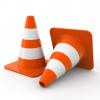
Special Considerations for Trips Away from Your Program
Trips away from your child care program are excellent ways to help young children learn. Trips present some risks, however. This lesson will help you learn how to prevent and respond to safety problems on trips away from your program. As a family child care provider, you may make daily or weekly trips away from your home to places like a neighborhood park or the local library. Routine trips and one-time field trips both require special planning to ensure children’s safety.
- Describe factors to consider when traveling away from your child care home.
- Summarize best practices when taking trips away from your program.
- Create a plan to keep children safe when on trips away from the program.
Trips are an excellent way to extend the curriculum. The right trips can capture children’s interests and allow hands-on experience that children cannot otherwise get in your family child care program. Trips also take advantage of the resources within your community. Nature preserves, police and fire stations, businesses, museums, and farms are all interesting venues for trips. Trips do not need to be elaborate. Children can learn so much from a walk around the block, a visit to the recreation center next door, or many other regular experiences.
In general, there are two types of trips you might take with children: routine trips and field trips. Routine trips are activities you do regularly that take you away from your program. Examples include going for a walk around the block or walking to the local playground or community center next door. Field trips are one-time events. You might take a field trip to the zoo, museum, farm, grocery store, or a variety of other community locations. To ensure children’s safety, both types of trips must be carefully planned and carried out.
Be sure to use your knowledge of child development when planning any trip. It is best to keep field trips short so children do not get overtired. Focus your trip on the content children are interested in or learning about. For example, if children have been studying food, you might visit the produce section of your local grocery store. This might be more appropriate and less tiring for the children than spending an entire day at a farm. Be wary of trips that involve huge crowds or noisy locations. These make it difficult to supervise children. They also make it harder for children to have hands-on opportunities. Remember, children can do more in small groups than they can in large groups.
You must be prepared to keep children safe on trips away from the home. There are a variety of dangers children might experience. A child might be injured or experience a medical emergency, such as an asthma attack. In the worst scenarios, a child may disappear or face life-threatening injuries. Careful planning can increase your chances of preventing or minimizing harm.
Good practices for trips away from the family child care program can take a variety of different forms. Watch how this program ensures accountability for children.
Trips Away From Your Program
Your first priority is to keep children safe on trips away from your program. Here is what you can do to make sure this happens:
Before the Trip
Do your research.
All trips should be planned as part of your overall curriculum. Trips provide hands-on learning opportunities that children cannot get in your family child care program. Think about how your planned trip extends learning. Make sure a field trip is necessary: is it possible or more appropriate to bring the experiences to your home? Once you decide on a trip, visit the location first. Make sure the location is safe and age-appropriate. Decide on your route and mode of transportation (walking, buses, etc.). Identify emergency resources at the destination: shelter locations, emergency phones, restrooms, etc.
For places you might visit routinely (for example, neighborhood playgrounds or parks) do not forget to use the outdoor safety checklists discussed in Lesson Four and to survey the area again each day you visit to make sure the area is safe before children begin playing.
Get Consent
Let parents know about the trip you are planning. Send home a written permission slip for field trips. Include information families will need, such as the location, date, time, cost, and transportation plans. Make sure you have a permission slip on file for routine trips. For routine trips, make sure families are aware of when in your daily or weekly schedule you travel away from your home and where you go. Families should always know where their children are and where they can pick them up.
Collect Fees (if applicable)
If there is a fee for the trip you should collect these fees prior to the trip. If you are using public transportation (city buses, trains, or subways), make sure you know how much the fare is. Collect exact change in advance.
Know Your Ratios and Recruit Volunteers
Maintain the appropriate provider-to-child ratios at all times (see Lesson Two for details). When on a field trip, it is best practice to have additional adults along for safety and security. Identify parents or others who could help on the field trip. Field trips are an excellent opportunity to invite children’s parents or other familiar adults to volunteer. You could also have a substitute assist on field trip days.
Travel Safely
Make a plan for safe travel—see Lesson Eight for details. Make sure child safety restraints are available in all applicable vehicles.
Make sure you have the health and safety documents and materials you will need. Bring the following materials:
- First aid kit (see Apply section); one per vehicle or group
- Care plans for children with special health needs
- Medications or equipment for children with special health needs
- List of emergency contacts (poison control, hospitals, etc.)
- Accurate roster
- Emergency contact information for families
- Copy of children’s registration information
- Hand sanitizer or wipes
- Drinking water
- Medical release permissions for emergency medical treatment
- Cash for a pay phone in case a cell phone malfunctions or for emergency incidentals
- Optionally, knotted rope or some system that allows children to hold onto each other while walking
- If you have infants and/or toddlers that are not yet potty trained, materials for diaper changes (e.g., diapers, wipes, changing pad)
Depending on the length of your trip, you may need to provide a snack or meal to the children. Plan the food you will bring and how you will transport it safely. Perishable foods have to be kept cold, as do some medications. Check to see whether water is available at your destination or plan to bring water.
Plan for Hygiene
Make sure children can wash their hands frequently. Identify locations of restrooms at your destination. Soap and water is always the preferable method for washing hands. If water is available, children should wash hands with soap and water. If water is not available for hand-washing, alcohol based hand sanitizers are appropriate.
Make sure you will be able to identify the children in your group quickly. Use a sticker with the name and contact information of your program. You could also provide children with matching T-shirts or hats to wear on the field trip.
Review Safety Rules
Make sure children know and understand how to be safe on trips outside the home. Review the rules and practice them. Tell children exactly what to do if they get separated from the group.
Spread the Word
Remind parents of the trip the day before. On the day of the trip, post a sign on your door or information board. It should say where you are going and when you will return. Once again, for routine trips, parents should be aware when you will be away from the child care home and where you and the children will be. You can notify families about these routine trips in your classroom handbook or weekly schedule.
On the Trip:
Use your roster .
Have an accurate roster with you at all times. Use it to count children before you leave the program, in the vehicle (if applicable), as children exit the vehicle, and when you get to the destination. Count regularly while at your destination and repeat these procedures when you return to your home.
Count children frequently by matching name to face. Use your roster. Double count children at strategic times and throughout the trip.
Teach Children Safe Travel Skills
If you are walking near traffic on your trip, follow these safe pedestrian rules:
- Only cross at a corner.
- Only cross when traffic signals indicate it is safe to cross.
- Always look left, right, and then left again before crossing.
- Always use sidewalks and crosswalks.
- Help children notice traffic signs. Talk about what they mean.
If you are traveling in a vehicle, make sure you follow all policies for vehicle safety. This includes use of proper child-safety restraints.
- Perform your required safety inspection on the vehicle before traveling (see Lesson Eight).
- Secure each child in his or her own safety restraint.
- Only allow children to enter the vehicle from the sidewalk or driveway.
- Supervise children while in the vehicle.
- Always check the vehicle for sleeping children before exiting. Never leave a child alone in a vehicle for any reason.
Think About Communication
Have a cell phone with you at all times. You may need to call for emergency assistance.
Think About Prevention
Avoid leaving any adult alone with children. Remind children of safety rules throughout the trip.
Keep Restroom Safety Rules in Mind
Make sure children never go into public restrooms by themselves. It is wise to have all children use the restroom before you leave for any trip, routine or special. Also be sure to check and change diapers. If a child needs to use the restroom or be changed when out on a trip, make sure you have a plan in place for keeping all the children safe.
Talk to the children, sing songs, and play games. Help them notice the interesting features of the world around them. Provide clipboards so they can take notes or draw pictures.
Think about how you would respond to problems on trips away from the home. Review the Planning for Emergencies Away from Your Program Activity. Read and answer the questions. Talk about your responses with your trainer, coach, or family child care administrator. Then compare your answers to the suggested responses.
Planning for Emergencies Away from Your Program Activity
Use these forms to help you prepare for emergencies on trips away from your program:
- Assess the risks before your trip. Although it may seem more obvious to fill out this form prior to each special, one-time field trip, it is a good idea to complete a risk assessment even for places you routinely visit. Your advance planning helps you handle potential risks encountered during your outings with confidence. Even if there are places you routinely visit now, taking time to do an assessment like the Risk Assessment below, can help you further identify potential risks and solutions to make all your trips safe.
- Make sure you have prepared for the trip. Complete the Field Trip Checklist and review with your family child care administrator.
- Collect permission from parents and guardians. Use the sample form below (or one provided by your state)
Risk Assessment
Field trip checklist, sample field trip permission form, demonstrate.
California Childcare Health Program. (2016, May). Field Trip Safety Tips. California Childcare Health Program. https://cchp.ucsf.edu/sites/g/files/tkssra181/f/fieldtripsen070604_adr.pdf
National Training Institute for Child Care Health Consultants. (2016, February). NTI homepage. Early Childhood Education Linkage System. https://ecels-healthychildcarepa.org/resources/national-childcare-resource-centers/item/393-national-training-institute-for-child-care-health-consultants
Whisner, J. (2018). Teaching tip: Field trip best practices. Association of Pennsylvania State College & University Faculties. https://www.apscuf.org/wp-content/uploads/2018/07/bu_teaching_tips/TT_APSCUF_FieldTripTips.pdf

- Child Care Center Management
- Child Care Classroom Management
- Allergy & Immunizations
Attendance & Ratio Management
Check-in kiosk.
- Enrollment & Waitlists
Online Registration
Parent engagement, tuition & billing, center management, allergy & immunization, classroom management, after school, preschool / pre-k.

Jackrabbit Care Support
With the industry’s largest team of instructors, Product Coaches and client success specialists, Jackrabbit Care delivers unmatched support.
Help Center
The Jackrabbit Care Help Center is available to you 24/7 for helpful content and videos to get you on track and succeeding at your child care center.

Trade Shows
Save time with Jackrabbit Care’s free resources for child care centers.
Jackrabbit Care Blog
Stay up-to-date on what's trending in the child care industry.
Watch our free webinars live or on-demand to discover business tips and strategies.
Find out where the Jackrabbit Care team will be this trade show season.
Our Company
The jackrabbit story, our leadership team, join our team, about jackrabbit care.

Jackrabbit Class
Jackrabbit dance, jackrabbit swim, jackrabbit music, jackrabbit cheer, jackrabbit technologies.

Gymnastics Gym Management Software

Cheer Gym Management Software

Dance Studio Management Software

Music School Management Software

Swim School Management Software

Cloud-Based Technology Solutions
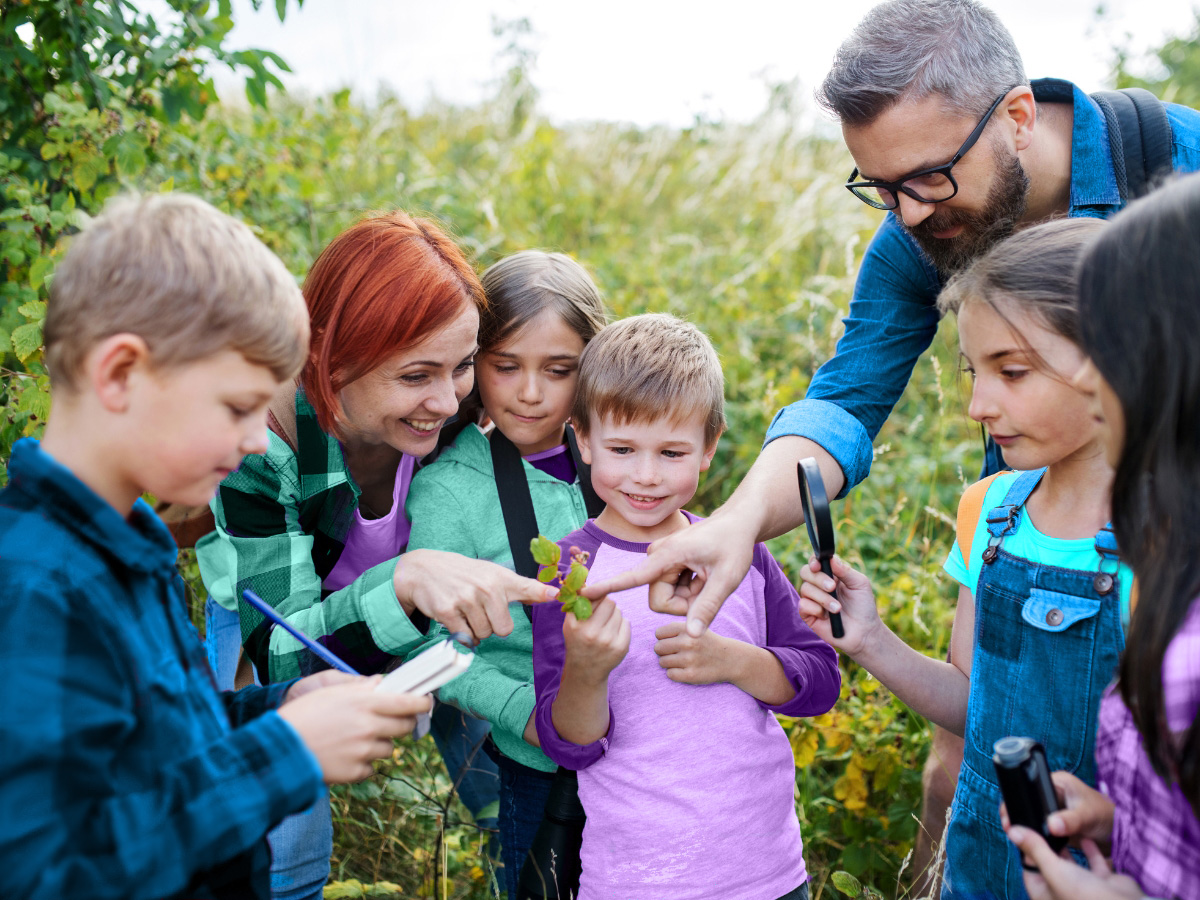
- Staff Development , Student Activities , Events
- Christian Mason
- March 14, 2023
How to Ensure Safety On Field Trips
Field trips offer a valuable learning experience for children, allowing them to explore, engage in fun activities and gain exposure to new experiences. The educational benefits of field trips are easy to see, but we can’t forget that children’s safety on these trips is priority number one. To help keep your next field trip as safe as possible, we’ve outlined some of the most common field trip accidents and injuries, and the top eight ways to ensure your little ones stay safe on their educational adventure!
Common Field Trip Accidents and Injuries
Slips and falls are likely the most common type of accident that can occur on a field trip. Children should always be supervised, especially when walking on uneven or slick surfaces such as wet grass or slippery steps. Keeping parents informed about the location and dress code for a field trip can help ensure that your kids are wearing appropriate shoes for wherever you’re headed. Send out a quick reminder to parents the day before via a parent engagement app or email to make sure that everyone comes prepared.
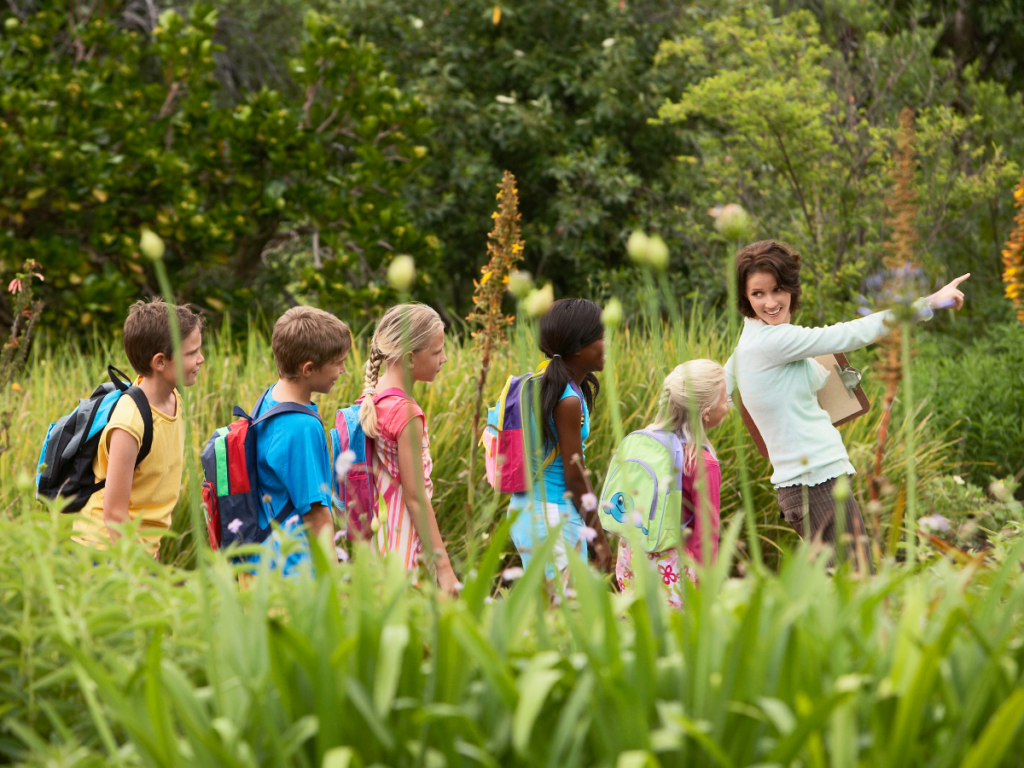
Sunburns are another common injury among children; make sure they wear sunscreen with at least SPF 15 and have them reapply it throughout the day if needed. Taking a few precautions to prevent simple, yet common field trip injuries like these only takes a few moments of work but will help ensure a safe trip for everyone involved!
Top 8 Ways to Ensure Safety on Field Trips
So you’ve got signed field trip permission slips in hand and you’re feeling ready to go, but if you want to make sure you’re truly prepared, check out these top eight ways to ensure safety on your field trip:
Make Sure You Have Signed Parental Consent
Parents should be informed of every stop, activity and detail that involves their child during a field trip. Having a signed document provides peace of mind for both you, as an organizer, and for parents who want to know that their children will be safe during an outing. A child’s attendance is ultimately their parent’s call. If they feel a certain location or activity isn’t safe for their child they may decide to pass on it.
Set Age Requirements
When planning a field trip, it’s important to consider the age appropriateness of the activity. Field trips can be an exciting way for students to learn outside of the classroom, but they should only participate in activities that are appropriate for their age group. Make sure to research any venues ahead of time and ensure all participants understand expectations before leaving. Additionally, it’s important to have adults present who can handle any issues that arise during the course of the field trip.
Fully Plan Out Transportation
It is imperative to have an organized plan for how students will get to and from the destination before embarking on a field trip. This could include arranging transportation such as buses or cars driven by trusted adults or making a backup plan in case a vehicle breaks down. By having a plan in place beforehand, you can help ensure that all of your students reach their destination safely and securely!
Keep Emergency Materials Near
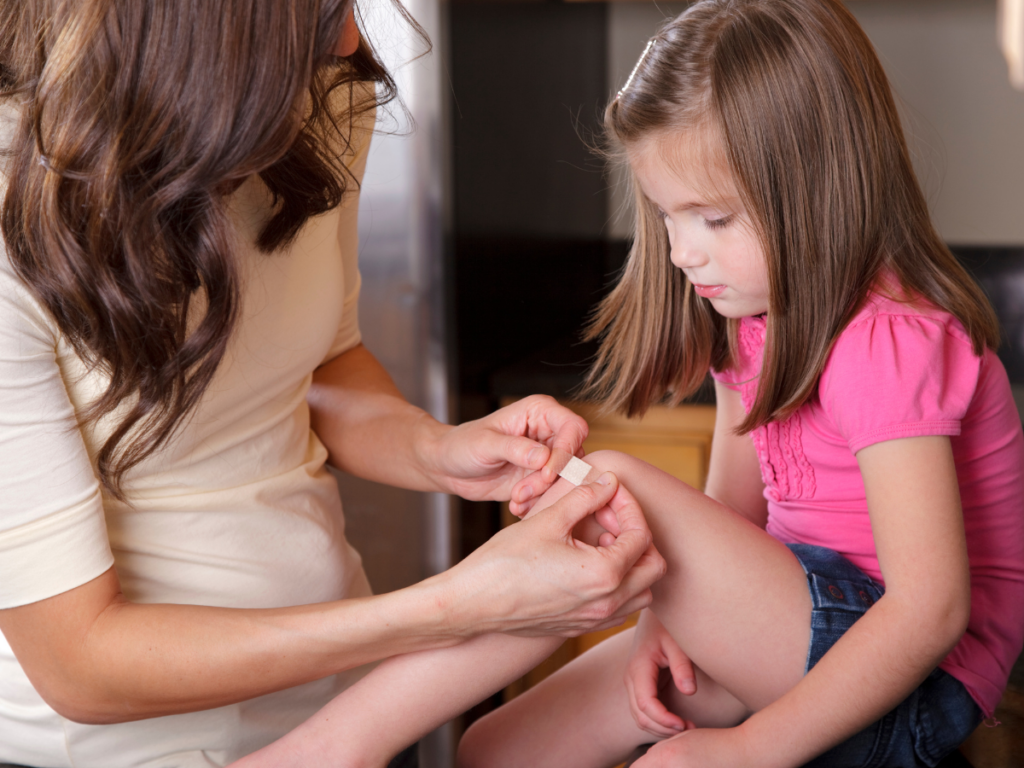
Sometimes, despite preparations, accidents do happen. It’s a good idea to carry a basic first aid kit with you. Depending on the needs of the children in your care, additional supplies may be necessary.
Make Sure Your Staff Is Trained
Providing training for staff members who are leading the field trip is another great way to ensure safety. Depending on the type of field trip and its location, there could be a number of potential safety risks that need to be addressed. Staff members should receive the appropriate training on how to identify hazards, develop plans and respond appropriately in an emergency situation. If your trip will have parent volunteers, ask that they get CPR and First Aid certified for added safety.
Be Aware of Your Surroundings
If you haven’t already, take the time to educate your students about stranger danger . Keeping an eye out for suspicious activity is essential to maintaining safety on field trips. Encourage students to be aware of their surroundings and any people or vehicles that appear to be out of place. Pay attention to body language and facial expressions, as these can indicate potential danger or concern from the children in your care.
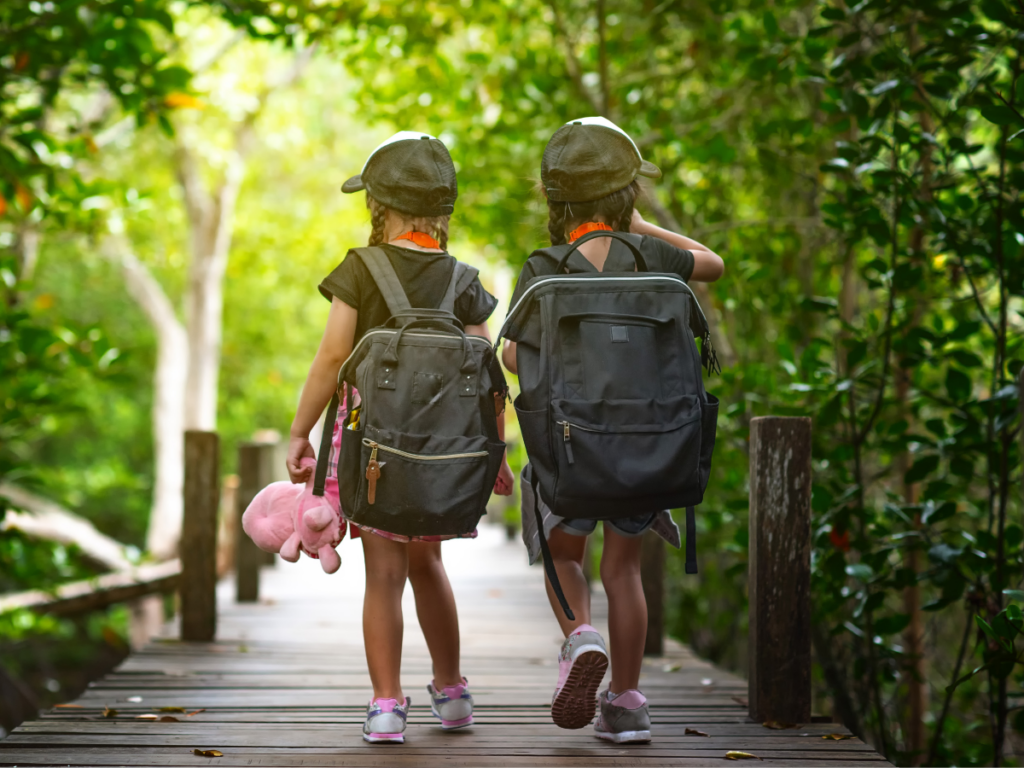
Teach your kids to use a buddy system or stay in groups to help them stay safe. Having a set meeting point if anyone gets lost during the field trip is another helpful way to make sure everyone gets home safely.
Be Aware of Allergies in Students
It is important to be aware of allergies that students may have when planning a field trip. Make sure to check with each student’s parents before the trip and ask if there are any specific allergies they need to know about. Some child care management software will track this information so you can easily reference it on the fly. It is also important that all teachers and staff members involved in the field trip are aware of these allergies so that they can quickly react if any of these allergens present themselves.
Stay Cool, Calm and Organized
Whether things are going to plan or an emergency happens, keeping a level head can be extremely beneficial. Try to remain calm during any difficult situations. This can help lower stress levels and allow you to think clearly about how to best respond or handle the situation. Staying organized helps reduce confusion in children and other adults, especially during an emergency.
When planning a field trip, it is important to take all necessary precautions to ensure the safety of everyone involved. Additionally, it is also important for everyone on the trip to be properly informed about safety guidelines and appropriate behavior while away from home. It can be a lot to prepare for but we know you can do it! By taking precautions, childcare centers and teachers can help reduce the risk of accidents on a field trip leading to great educational experiences and lasting memories for your students.
Want to streamline your next field trip? See how Jackrabbit Care can help you do it !
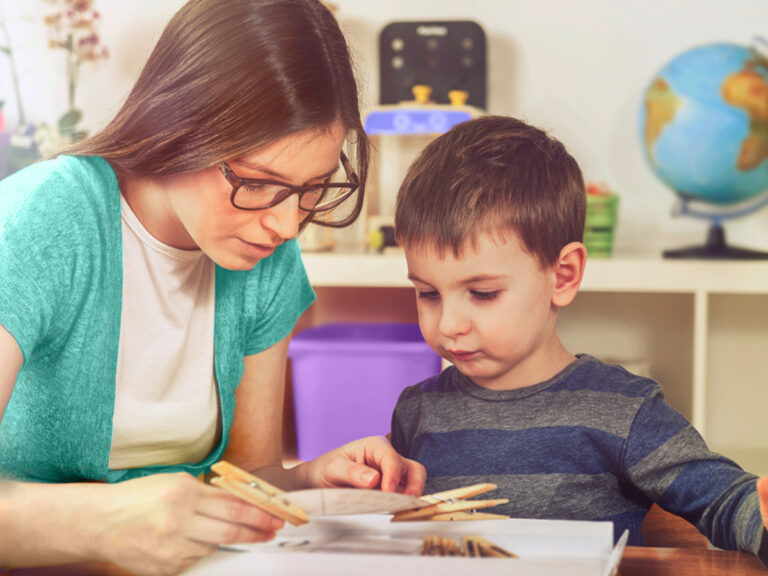
You Might Also Like
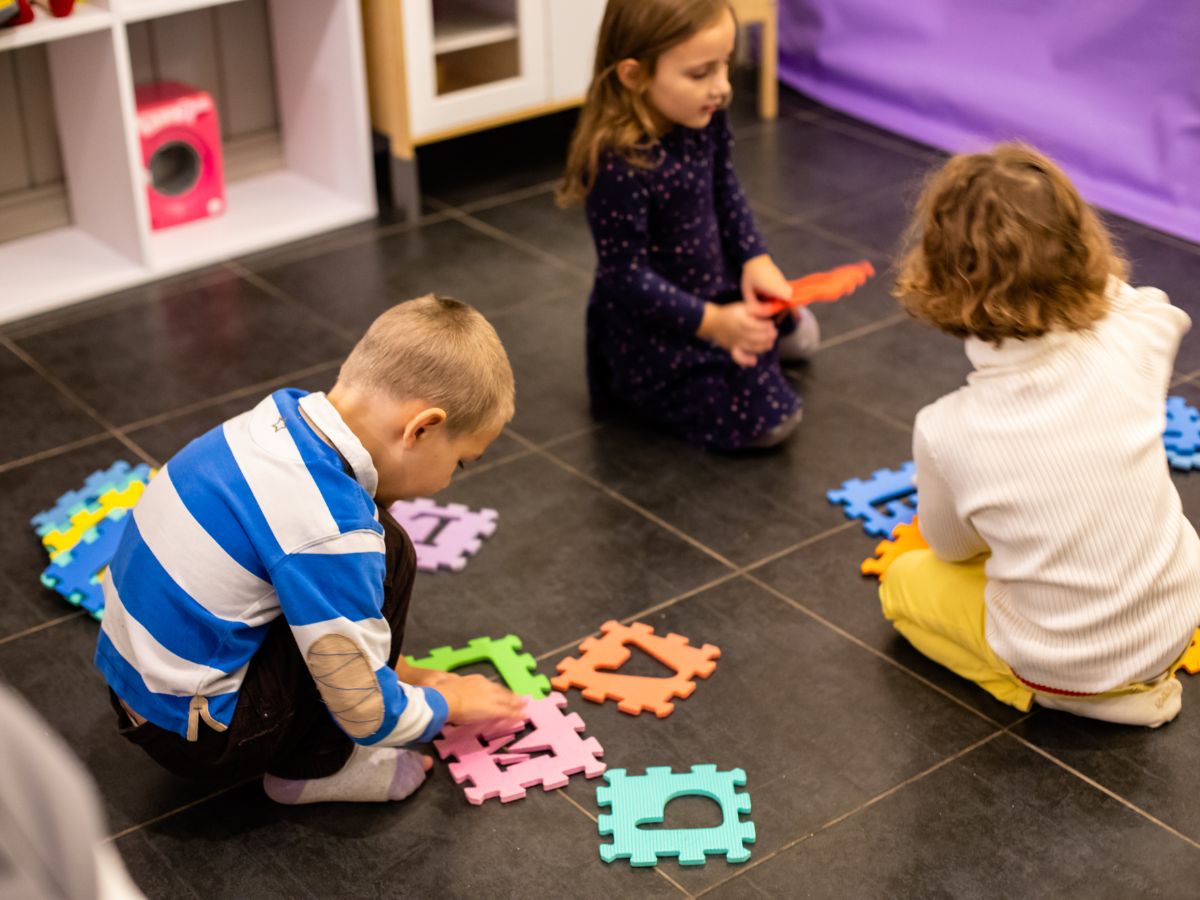
Maximizing Your Child Care Center’s Summer Programs with Jackrabbit Care
Summer is an important and busy time at a child care center. See how Jackrabbit Care can help you maximize your summer program.
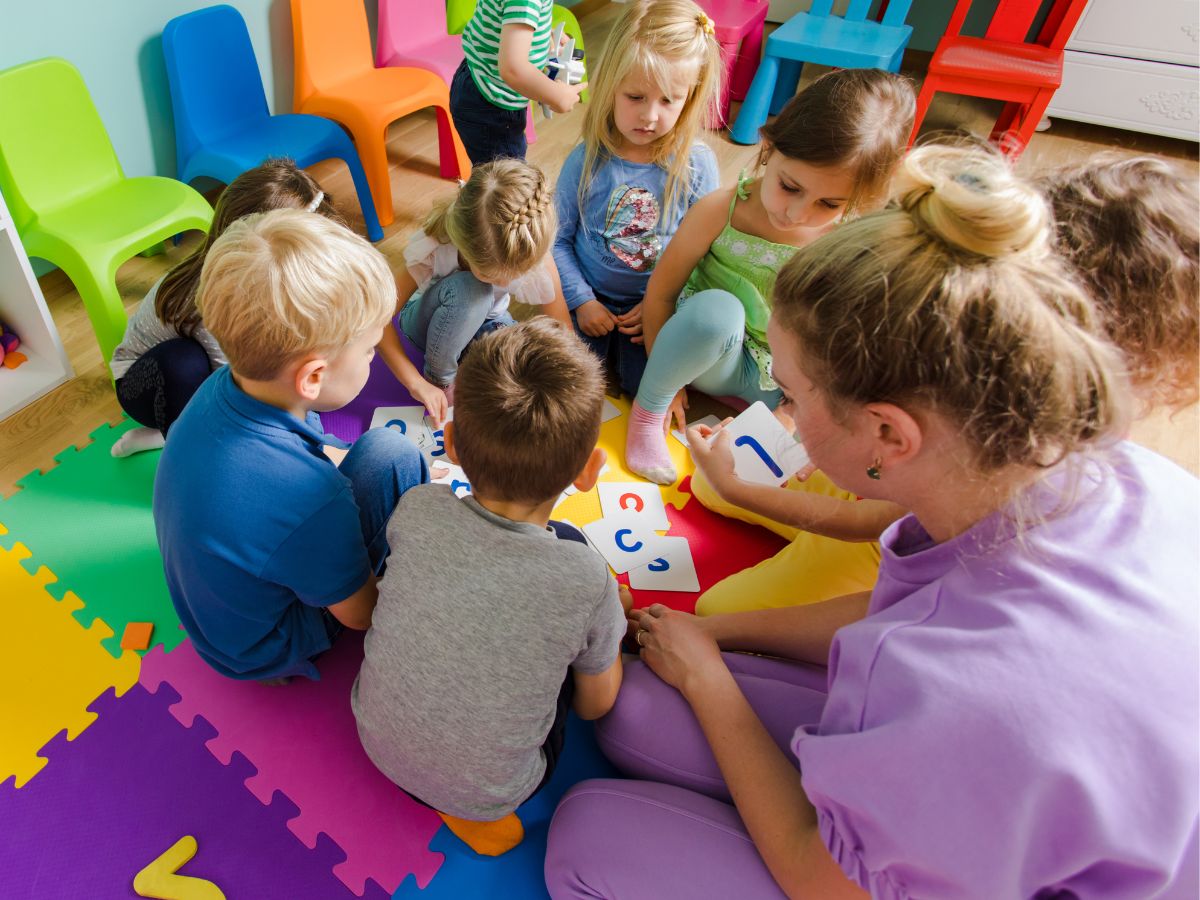
A Child Care Center’s Ultimate Guide to Staff Management
Staff management is critical for the success of your child care center. Here is your ultimate guide from hiring to daily staff management.

How Classroom Curriculum Sharing Enhances Learning Outcomes
Sharing your curriculum is one of the best ways to enhance learning outcomes for your students. Here are some ways you can make sure you communicate the curriculum and ensure your parents are actively involved.
Stay In the Know
Keep up-to-date on what's trending in the child care industry with new jackrabbit blogs, webinars, event announcements, and more. subscribe today for our monthly newsletter, keep up-to-date on what's trending in child care..

Child Care Software Management
Compare Jackrabbit Care
About Jackrabbit
See How Jackrabbit Care Works
Get Started
Schedule a Live Demo
From Our Blog - A Place to Grow
From our blog a place to grow.
The Ultimate Guide to Milestone Tracking in Early Childhood Education

How to Guide: Streamlining Child Care Management With Software Solutions
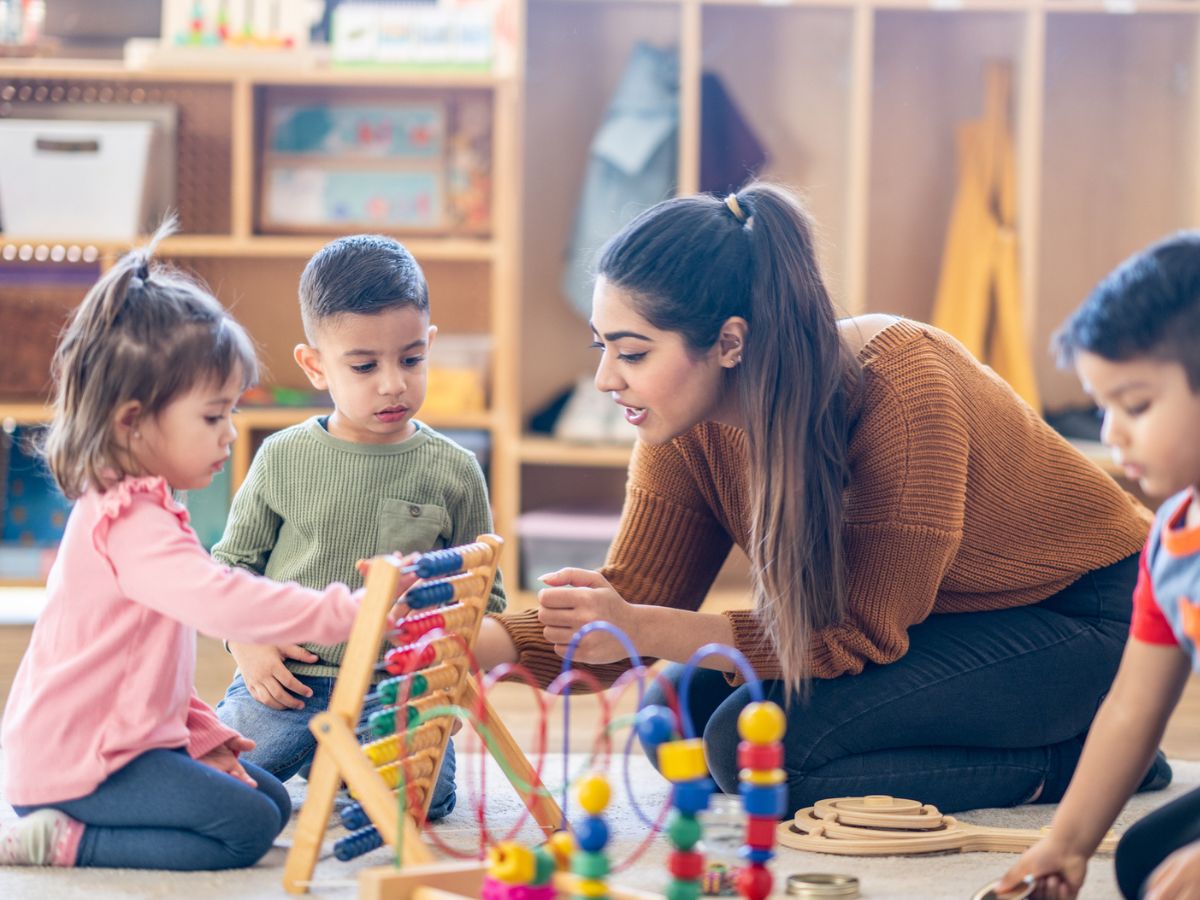
5 Factors to Look for that Indicate High-Quality Childcare Services

Embracing ePayments: Enhance Convenience and Security at Your Child Care Center
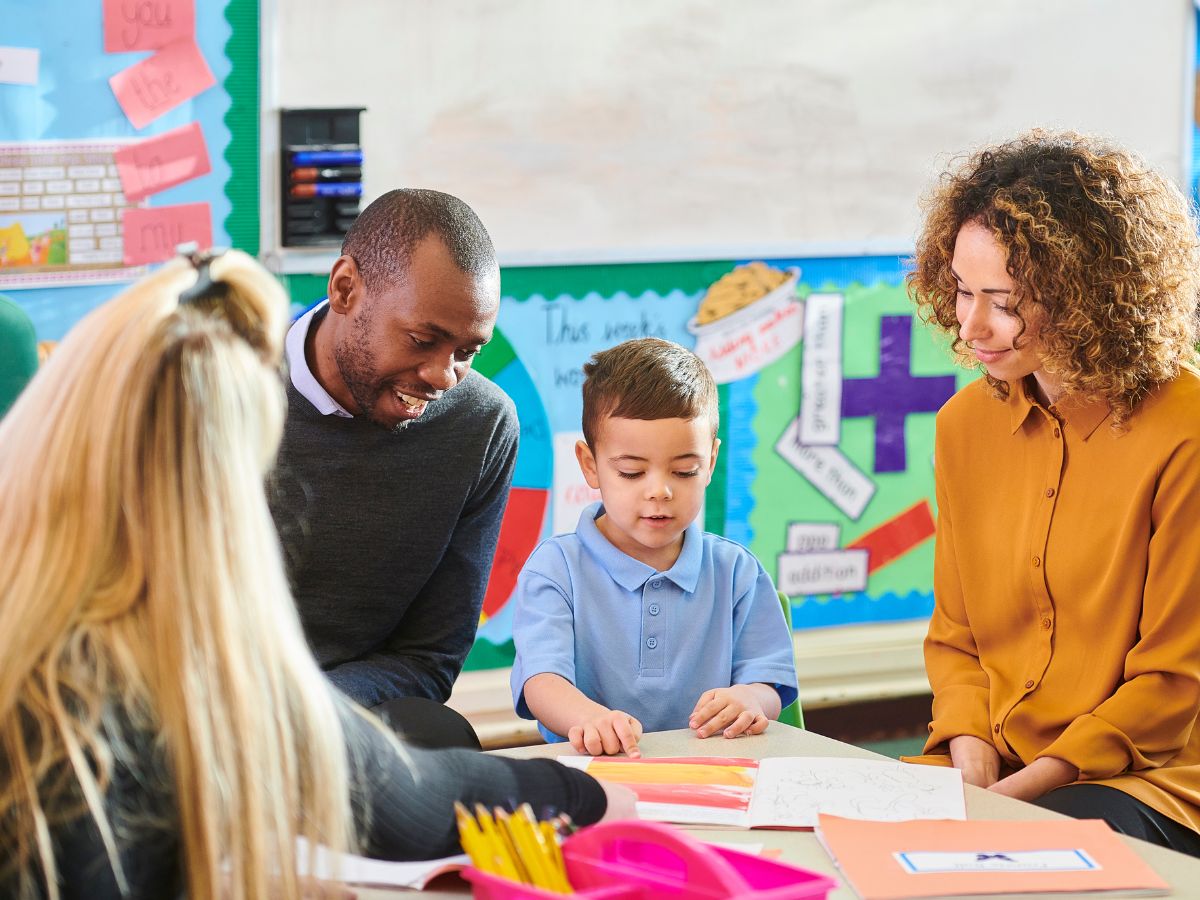
10 Ways Jackrabbit Care’s Family Engagement App Strengthens Parent-Teacher Bonds
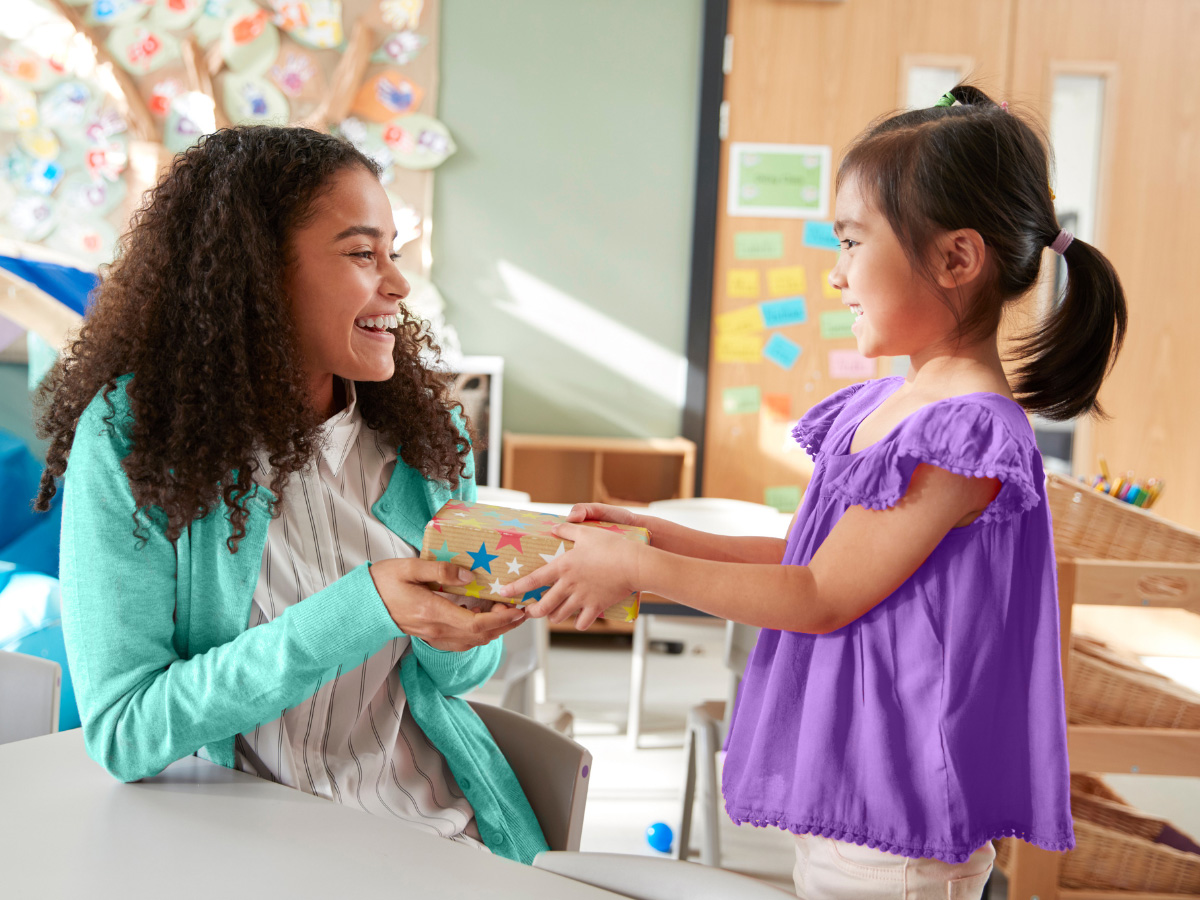
10 Ways to Show Appreciation to Your Staff During Teacher Appreciation Week
© 2023 Jackrabbit Care
Login to Jackrabbit Care
Which version are you running?
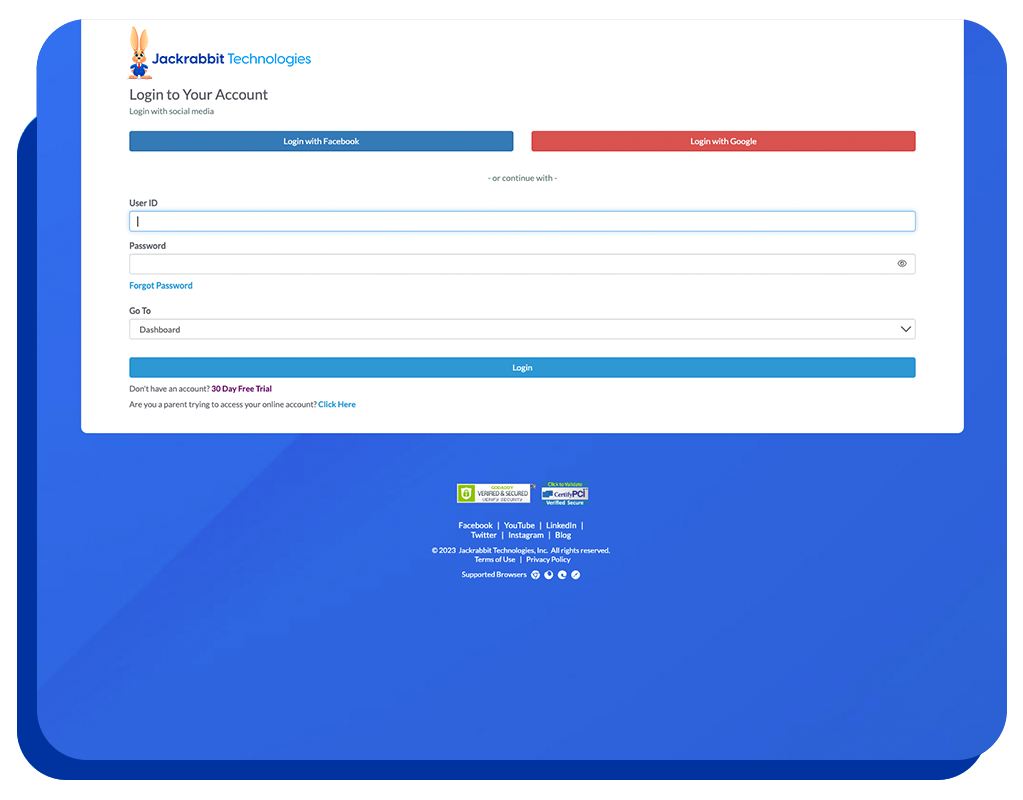
Schedule Today!
See jackrabbit care in action.
Fast & Easy Online Booking Choose one of the options below and you’ll be directed to our online scheduler to select a day and time.

- PRO Courses Guides New Tech Help Pro Expert Videos About wikiHow Pro Upgrade Sign In
- EDIT Edit this Article
- EXPLORE Tech Help Pro About Us Random Article Quizzes Request a New Article Community Dashboard This Or That Game Popular Categories Arts and Entertainment Artwork Books Movies Computers and Electronics Computers Phone Skills Technology Hacks Health Men's Health Mental Health Women's Health Relationships Dating Love Relationship Issues Hobbies and Crafts Crafts Drawing Games Education & Communication Communication Skills Personal Development Studying Personal Care and Style Fashion Hair Care Personal Hygiene Youth Personal Care School Stuff Dating All Categories Arts and Entertainment Finance and Business Home and Garden Relationship Quizzes Cars & Other Vehicles Food and Entertaining Personal Care and Style Sports and Fitness Computers and Electronics Health Pets and Animals Travel Education & Communication Hobbies and Crafts Philosophy and Religion Work World Family Life Holidays and Traditions Relationships Youth
- Browse Articles
- Learn Something New
- Quizzes Hot
- This Or That Game
- Train Your Brain
- Explore More
- Support wikiHow
- About wikiHow
- Log in / Sign up
How to Stay Safe on a Field Trip
Last Updated: December 15, 2023
wikiHow is a “wiki,” similar to Wikipedia, which means that many of our articles are co-written by multiple authors. To create this article, volunteer authors worked to edit and improve it over time. This article has been viewed 2,890 times. Learn more...
Many parents are relaxed and even want their children to go on field trips. On the other hand, other parents may be on the uneasy side and are concerned about the safety of their children on the field trips. Worries about getting lost, following strangers, going to unsafe places, and behaving inappropriately are common things that parents worry about. To ease your parents' worries, here is how to stay safe during a field trip.
Staying Physically Safe

- If you don't have a phone but need to call your parents, ask a teacher for help. They may allow you to use their phone. If you are indoors (such as in a hotel), you may ask a member of staff to use their phones.

- Even if no vehicles are crossing, don't walk over. A car could suddenly come over.

- If you need to go to the bathroom, ask a chaperone or teacher for assistance. Then, they will show you where the bathroom is and stay near it for you to catch up.

- You can take turns looking out for each other while using the restroom.

- Don't ask a person who doesn't look like staff; you don't know what their intentions are (plus they may not know how to help you).
While Dining Out

Avoiding Sickness

- You could also try hovering over the toilet seat to pee if you are a female. Make sure you are aiming in the toilet and not to the sides; this will get messy if you do so.

- In the meantime, freshen up with hand sanitizer and practice bathroom hygiene. If you get struck with diarrhea, practice bathroom hygiene and use seat covers when using the bathroom. Make sure to wash your hands frequently.
Expert Q&A
- ↑ https://www.hseblog.com/cross-road-safely/
About This Article
- Send fan mail to authors
Did this article help you?

Featured Articles

Trending Articles

Watch Articles

- Terms of Use
- Privacy Policy
- Do Not Sell or Share My Info
- Not Selling Info
Don’t miss out! Sign up for
wikiHow’s newsletter
How to Have a Safe, Fun, and Successful Field Trip
When You Leave the Classroom, There's a Whole New Set of Rules
Hero Images/Getty Images
- Classroom Organization
- Reading Strategies
- Becoming A Teacher
- Assessments & Tests
- Secondary Education
- Special Education
- Homeschooling
- B.A., Sociology, University of California Los Angeles
New teachers might naively think that field trips are easier and more fun than a typical day in the classroom. But throw in crises like a lost group of children or wasp stings, and field trips can go from fun to frantic in no time.
But if you adjust your expectations you can come up with a new, more practical way to approach field trips and minimize the chances of drama and mayhem.
Tips for a Successful Field Trip
Follow these field trip tips and you'll likely create fun learning adventures for your students:
- Explicitly discuss field trip behavior rules with your students beforehand. Teach, model, and review appropriate field trip behavior with your students for at least a week before the big event. Drill into their heads that field trips are not the time or place to mess around and that any aberrant behavior will result in non-participation in any future field trips that school year. Sound serious and back it up with consequences as needed. It's good to have your students scared of testing the boundaries on field trips. Emphasize that they are representing our school's reputation when they are off-campus and that we want to present our best behavior to the outside world. Make it a point of pride and reward them afterward for a job well done.
- Give your students a learning task ahead of time. Your students should show up for the field trip with a base of knowledge on the subject at hand, as well as questions to answer before returning to the classroom. Spend some time in the weeks before the field trip discussing the subject matter. Review a list of questions they will be looking to answer during the field trip. This will keep them informed, engaged, and focused on learning all day long.
- Choose parent chaperones wisely. Field trips require as many adult eyes and ears as you can get, but unfortunately, you can't be everywhere at once. From the first day of school, observe the parents of your students closely, looking for signs of responsibility, firmness, and maturity. A lax or careless parent can be your worst nightmare on a field trip, so choose your parental allies wisely. That way, you'll reap the benefits of having adult partners in the field trip process.
- Make sure you have all the necessary medications. Talk to the school nurse and procure any and all medications that your students usually take during the day. While on the field trip, make sure you administer the medications accordingly. If you have students will allergies, you may need to get trained on how to use an EpiPen. If so, the student involved will need to stay with you at all times.
- Arrive at school early on field trip day. The students will be excited and antsy, ready to go. You'll want to greet the chaperones and give them instructions for the day. It takes some time to organize the sack lunches and ensure that everyone has what they need for the day. And one last pep talk on appropriate behavior never hurt anybody.
- Give your chaperones the tools they need to succeed. Make nametags for all chaperones and students. Create a "cheat sheet" of the day's itinerary, special rules, your cell phone number, and the names of all kids in each chaperone's group; distribute these sheets to each adult on the field trip. Procure and label grocery bags that each chaperone can use to carry the group's sack lunches. Consider getting a little thank-you gift for each chaperone, or treat them to lunch that day.
- Be proactive with regards to challenging students. If you have a student who causes trouble regularly in the classroom , it's safe to assume he or she will cause at least five times more trouble in public. If possible, ask his or her parent to be a chaperone. That will usually limit any potential problems. Also, when you are making groups, split any problem pairs into separate groups. This is a good policy for troublemakers, chatty kids, or bickering frenemies. And it's probably best to keep the most challenging students in your own group, rather than pawning them off on an unsuspecting parent chaperone.
- Count all day. As the teacher, you will likely spend most of your day counting heads and making sure everyone is accounted for. Obviously, the worst thing that can occur on a field trip is losing a student. So count accurately and often. Enlist the help of chaperones in this task, but do it yourself too, for your own peace of mind. Keeping track of each and every student is the number one priority of field trip day.
- Do a "debriefing" when you return to the classroom. If you have a few extra minutes after the field trip and before dismissal from school, put on some soothing classical music and have the students draw about what they saw and learned that day. It gives them a chance to decompress and review what they experienced. The next day, it's a good idea to do a more active and in-depth review of the field trip material, extending the learning further and connecting it to what you're working on in the classroom.
- Write thank-you notes after the field trip. Lead a class language arts lesson the day after your field trip, formally thanking the people who hosted your group. This serves as an etiquette lesson for your students and helps form your school's good reputation at the field trip destination. In future years, this goodwill could translate into prime perks for your school.
With proper planning and a positive attitude, field trips can be unique ways to explore the outside world with your students. Stay flexible and always have a Plan B, and you should do just fine.
- Field Trips: Pros and Cons
- Field Trip Rules
- 10 Ways to Make Learning Fun for Students
- 10 Ways to Keep Your Class Interesting
- 5 Fun Field Trip Ideas for Elementary School
- Field Trip Ideas for Elementary School Students
- Why Teaching is Fun
- Teaching Strategies to Keep Struggling Students Working
- 25 Simple Ways to Say Thank You to Teachers
- 10 Ways to Put the Home in Schooling
- How to Celebrate Elementary School Graduation
- Last Day of School Activities
- 6 Ways Elementary School Teachers Can Welcome Students Back to School
- Classroom Jobs for Elementary School Students
- 7 Back to School Tips for Teachers
- 7 Tips for Homeschooling Teens
Call Us Today
(877) 854-7396, field trip safety: guidelines, checklist, and plan for k-12 school.
As you may know, field trips are a staple of most school curriculums. They are also one of the best ways to learn about something new; in fact, they can be more educational than classroom time alone.
But because these activities require travel and can present various hazards—such as weather-related emergencies field trip safety is paramount for all educators.
For those who take field trips with their students each year, checklists and plans are a must.
Here is what you need to know about your next field trips.
Table of Contents
How to protect your kids and staff on a school field trip.
If your class is heading out to a museum or local amusement park it is vital to protect the health and safety of your field trip leaders and kids. Many private schools opt to take a bus while others may not have the funding to support a bus.
Following are a few tips on protecting your kids and staff.
- Go over the safety rules and all policies and procedures with your staff and kids before leaving for the field trip.
- Make sure students are properly dressed and have clear instructions on what to do in case of an emergency.
- Always have a roster of students and a chaperone with you when you go on a field trip.
- Instruct leaders to conduct a head count throughout the trip of all students.
- Make sure the restroom is safe before letting students enter.
- Have an acceptable ratio of students to staff based on the age of the class.
- Check students against the roster several times throughout the day.
- If any student is missing, notify facility staff or the police immediately.”
- Ask people in the nearby area to stay there until staff or police arrive so they may provide any information they may have about the missing student.”
- Make arrangements to have identifiable T-Shirts for all kids and staff to wear as a group.
School Leadership Needs to Be Responsible for Establishing Field Trip Safety Guidelines
School leaders need to be responsible for establishing field trip safety guidelines. This includes the private school principal, vice, principal, and all board members. We also recommend including your school’s PTA to be part of the conversation.
School leaders should consult with experts in the field, such as safety professionals, to ensure that the guidelines are comprehensive and cover all potential risks. Once the guidelines are established, they should be communicated to all staff and students, and everyone should be familiar with them before any field trips are taken.
Careful planning with a hands-on approach from top leadership helps create an atmosphere of safety first.
Use a Field Trip Safety Checklist
A field trip safety checklist is a list of items that should be checked before, during, and after going on a field trip..
Every field trip will present a challenge or two. This is why it is critical for staff members on the trip to be well-informed and have an active role. Your checklist needs to include some of the following information.
- A list of potential hazards and how to mitigate them
- Safety procedures that should be followed by leaders and participants
- A timeline and plan for the field trip
- Behavioral expectations of the event host
- Are restrooms provided or available
- What are students and teachers required to bring for the field trip
- Medication requirements for students dealing with asthma, allergies, or a cold
The checklist should include items such as safety gear, a first aid kit, and a map.
You never know when a child may become injured or lost. Your checklist should include:
- A mobile phone and/or two-way radio to communicate between staff and parents
- Printed maps to and from the field trip location
- A pen and a small notepad
- First aid Kits
Carry care plans with you that describe any special needs of your participants. The kit should include information about the participant’s care plan and any medications or equipment that may be needed.
The checklist should also include emergency contact information.
When an emergency happens your staff needs to be able to be reached and they need to know who to reach.
- All Parents should have a way to reach the teacher in case of emergency
- Each teacher or parent volunteer who is responsible to supervise kids needs the emergency contact information of each student and the teacher
- Drivers need a copy of the release forms for each student they are responsible for in case emergency treatment is required.
- An accident report to document what happened
Each Vehicle Needs a First Aid Kit for the Field Trip
Each vehicle needs a first aid kit for the field trip. This will ensure that everyone is safe and has the supplies they need in case of an emergency. The first aid kit should include bandages, antiseptic, and basic pain relievers.
School Waiver Forms
Protect your school with a waiver signed by the parent.
When sending students on a field trip, it is essential that all safety procedures are in place beforehand. This includes having the appropriate safety equipment and making sure all participants are briefed on the purpose of the trip, what to expect, and how to behave.
One key element of ensuring a safe field trip is having a waiver form signed by the parent or guardian of each student. This document provides key points of information that may be helpful to a guardian in understanding what a waiver form is and why it is important.
A waiver form is a legal document that releases the school from liability in case of an accident or injury during the field trip. The form should outline the risks involved in participating in the trip and list any safety precautions that will be taken. By signing the form, the parent or guardian agrees to assume these risks and agrees that the school will not be held responsible if something goes wrong.
Does the School Event Host Require a Separate Waiver to be Signed?
If you are unsure of whether or not a school event requires a separate waiver to be signed, it is best to check with the event coordinator or the person in charge of organizing the event.
They will be able to tell you if a waiver is necessary and provide you with the appropriate paperwork.
It is also important to note that even if a school event does not require a waiver to be signed, it is still important to make sure that all participants are briefed on the safety and etiquette of the event. This includes information on special equipment and permits that may be required.
Do Waiver Forms Protect a Business?
When a business takes students on a field trip, there are many potential risks involved. In order to protect the business from liability in case of an accident or injury, it is important to have all participants sign a waiver form. This form releases the business from any responsibility in case of an accident or injury.
In addition to protecting the business, waiver forms can also help to protect the students themselves. By signing a waiver form, students are agreeing to participate in the trip at their own risk and are aware of potential hazards. This can help to prevent accidents or injuries from occurring in the first place.
Overall, waiver forms are an important tool for businesses and organizations that take students on field trips. They help to protect both the business and the students by releasing responsibility and awareness of potential hazards.
Assign Someone to be in Charge of the Field Trip Safety Plan
The field trip safety plan should be designed and created by someone who is in charge of safety for the trip. This person should be familiar with the area where the trip will take place and the activities that will be undertaken.
They should also have a good understanding of emergency procedures and first aid. The safety plan should be reviewed and approved by the school administration before the trip takes place.
In case of a medical emergency having a safety plan can help reduce stress as a plan is already established.
Coordinate Meals and Snacks ahead of time while on the Field Trip
One way to make sure that everyone on the field trip is well-fed is to coordinate meals and snacks ahead of time. This can be done by assigning someone to be in charge of food, or by simply asking everyone to bring their own packed lunch.
If you are providing the food, make sure to take into account any allergies or dietary restrictions. It’s also a good idea to have some snacks on hand in case anyone gets hungry between meals.
Field Trip Planning Needs Open Communication with School Staff
Field trip planning needs open communication with school staff in order to be successful. This means that staff members need to be aware of the trip, its purpose, and any potential risks involved.
It is also important to have a clear plan for how the trip will be conducted and what specific roles each staff member will play. By communicating openly and effectively, field trips can be a fun and educational experience for everyone involved.
Added Protections are needed for Preschool Field Trip Safety
With more and more preschools taking their students on field trips, it is important that additional protections are put in place to ensure their safety.
This could include having all adults present to undergo a background check , ensuring that there is adequate adult supervision at all times, and having a first aid kit on hand in case of any accidents.
Preschoolers may need to bring their child safety restraints to comply with state laws or regulations.
The ratio of adults to preschoolers should be increased as an added precaution. We recommend a high level of parent involvement when possible for these types of field trips.
Including additional adults not only helps the preschool staff but also reduces the stress and anxiety of the parents .
Ensure your preschools are with an adult at all times and that each adult has a list of students they are responsible for.
By taking these precautions, we can help make sure that all preschoolers have a safe and enjoyable time on their field trips.
Contact Your Private School Insurance Agent
As church property insurance agents , we are typically the last person a school thinks of. As your insurance agent, we can be an additional resource in helping identify areas to reduce risk and keep your kids safe.
We can also verify if you have the needed permission slips, auto insurance, and liability coverage in place.
Notify your Insurance Agent of the Event 90 days prior
Before the school field trip, it is important to notify your insurance agent as soon as possible. This will ensure that any potential claims are covered for the field trip. Depending on the type of event and the needed insurance protection, there may be an additional charge to cover the field trip.
Your insurance agent will need to know the details of the field trip, including the date, time, number of attendees, and location.
Do you need to Add an Organization as an Additional Insured?
An additional insured is an entity that is protected under your insurance policy. This could be another organization or individual that is not the primary insured.
In most cases, you will need to add an additional insured if there is a contract or agreement in place that requires it. For example, if you are renting space from a church, the church may require you to add them as additionally insured on your policy.
Does the Venue Require Higher Insurance Limits?
If the venue you are using for your private school event requires higher insurance limits, you should contact your private school insurance agent. Your agent will be able to provide you with an estimated cost for the increased coverage.
The insurance company may or may not be able to provide an instant quote so plan ahead to give the company enough time.
Maintain Basic Hygiene on your School Field Trip
When you are on a school field trip, it is important to maintain basic hygiene . This means that you should wash your hands often, especially before eating.
You should also avoid touching your face, and if you do, make sure to wash your hands afterward. If possible, use hand sanitizer or wipes to clean surfaces that you may have come into contact with.
Assign Students to Specific Drivers and Vehicles for the Duration of the Field Trip
Before you exit your school and head out on your field trip, assigning students to specific drivers and vehicles for the duration of a field trip can help ensure that everyone arrives at the destination safely and on time.
This can be especially helpful if the field trip is to a location that is unfamiliar to the students or if there is limited parking available. By having a designated driver for each vehicle, students can relax and enjoy the ride without having to worry about getting lost or being late.
It also provides additional eyes letting the driver know if a student is missing.
Obtain Parent Volunteers to Chaperone
I always say the best trip is the one where I had the most help. For the trip, you are planning to seek help from parent volunteers.
Here are a few suggestions.
- Talk to parents early and let them know what you expect from chaperones.
- Choose chaperones that fit well with your expectations and abilities.
- Communicate with chaperones regularly.
- Be clear about the purpose of the trip, what will happen, and when you should arrive.
- Consider covering fuel costs and parking for your chaperones if finances allow.
- Ensure all chaperones stay in compliance with any laws.
- If a chaperone gets into a crash provide them with details on how to be prepared for emergencies such as an auto accident beforehand.
- Thank your chaperones for their help!
Verify Auto Insurance Coverage from chaperones who are helping with the Transportation of Students and Teachers.
As a parent, you may be asked to chaperone a school field trip. If you will be driving other students and teachers, it is important to verify that the vehicle you will be using is properly insured .
The first step is to check with your own auto insurance carrier. They can confirm your current insurance coverage and your applicable deductibles.
Many private schools require their adult chaperones to carry no less than $100,000 / $300,000 in auto liability protection. This helps protect the kids in the event of an accident. It also provides an additional layer of protection for the school.
Also, verify the motor vehicle registration is current for the van or private passenger vehicle the school will be using.
Does the School have Non-Owned Hired Auto Insurance Coverage?
When a private school uses chaperones to transport children and staff, they need to have coverage called non-owned hired auto insurance. This auto insurance policy may be included in your commercial liability insurance policy or your auto insurance policy.
Never assume either of these insurance policies includes this coverage. Always ask your insurance agent if it was purchased by the school. We recommend including physical damage coverage as well for this insurance policy.
Need help with your next Field Trip?
Integrity Now Insurance Brokers is a full-service insurance agency that specializes in private school insurance and church insurance .
We have helped countless schools and churches obtain the needed liability insurance coverage , workers’ compensation insurance , abuse, and molestation insurance , directors and officers insurance , group health insurance , and business auto insurance for their private schools throughout California , Arizona, Nevada, Washington, Texas, and Ohio.
We understand field trips can be complicated and we are here to help take care of your insurance concerns.
Reach out to one of our licensed church insurance agents and we will take the time to get to know you and your organization.
Quick Links
- Our Services
- Certificate Of Insurance Request
- Temple Insurance Agency
- Insurance For Nonprofits
Get In Touch
6285 east spring street #457, long beach, ca, 90808, usa, [email protected].
Copyrights © 2022. Integrity Now Insurance Brokers, Inc.
Accessibility Toolbar
- Powered with favorite Love by Codenroll
Get up-to-date UND safety information.
Does Slip-Resistant Footwear Reduce Slips, Trips, and Falls in Food Service?
Slips, trips, and falls are the second most common type of fatal work-related injuries and the third most common type of non-fatal work-related injuries in the United States. Although falls from heights are more likely to result in a fatality, falls on the same level (which often start as a slip or trip) occur more frequently and can cause injury. Recent US Bureau of Labor Statistics data show that 50% of all same-level falls resulted in more than 10 days away from work. Sprains, strains, dislocations, and tears to the lower extremities are the most common injuries after a same-level slip, trip, or fall. These injuries are estimated to cost nearly $13 billion in direct workers’ compensation-related costs each year and are the most expensive category of injuries.
Laboratory studies of slip-resistant footwear to reduce slips, trips, and falls have shown promise in reducing slips, but limited field research made it difficult to demonstrate if slip-resistant footwear actually reduced injuries. NIOSH researchers evaluated the effectiveness of a no-cost-to-workers, highly rated slip-resistant shoe program in preventing workers’ compensation injury claims caused by slipping on wet or greasy floors among food services workers. The study, Effectiveness of a no-cost-to-workers, slip-resistant footwear program for reducing slipping-related injuries in food service workers: a cluster randomized trial, was published in the Scandinavian Journal of Work, Environment and Health.
Approximately 17,000 food services workers from 226 school districts, serving students in kindergarten through 12 th grade participated in the study. Workers were clustered by school district and the districts were randomly assigned either to a group that received no-cost, 5-star rated slip-resistant shoes or to a group that generally bought their own slip-resistant shoes.
Investigators looked specifically at workers’ compensation injury claims caused by slipping on wet or greasy surfaces, the type of incident that the shoes were designed to prevent. The school districts provided with highly rated slip-resistant shoes saw a 67% reduction in claims for slip injuries; whereas there was no decline seen in the group who did not receive the highly rated slip-resistant shoes. The findings revealed a baseline measure of 3.54 slipping injuries per 10,000 hours worked among the intervention group, which was reduced to 1.18 slipping injuries per 10,000 hours worked in the follow-up period when slip-resistant shoes were provided.
Another finding from this research was that prior to the no-cost slip-resistant footwear intervention, workers over 55 years old had a higher probability of a slip-related workers’ compensation injury claim (4.2 injuries per 10,000 worker hours) than workers under age 55 (2.3 injuries per 10,000 worker hours). This is of public health significance because more workers over age 55 continue to remain active in the US workforce. Without intervention, slipping injuries may be an increasing injury problem for older workers.
This was the first randomized controlled trial evaluating the effectiveness of a no-cost –to-workers slip-resistant footwear program for reducing slipping-related workers’ compensation injury claims in food service workers in the field. This research helps to bridge the gap between understanding the performance of slip-resistant footwear in laboratory settings to understanding the effectiveness of slip-resistant footwear at preventing injuries in a functional work environment. Additionally, this study attempted to isolate the effect of a single intervention as much as possible through the study design.
The findings from this study provide evidence of the effectiveness of slip-resistant footwear and may assist employers, managers, and workers in their decision on whether to invest time and resources in a slip-resistant footwear program.

Watch your step
Leave a Comment Cancel reply
Your email address will not be published. All comments will be reviewed prior to posting.
Related Posts
June is National Safety Month-Week 4
Recognizing and preventing work-related injuries in colleges, june is national safety month – week 3.
- Search Please fill out this field.
- Manage Your Subscription
- Give a Gift Subscription
- Newsletters
- Sweepstakes
- Celebrity Vacations
Kristin Cavallari Takes Trip to Bahamas with Boyfriend Mark Estes and Her 3 Kids: 'Favorite People'
Cavallari has been dating the TikToker for the past several months, and revealed in March that he had already met her kids
Charlotte Phillipp is a Weekend Writer-Reporter at PEOPLE. She has been working at PEOPLE since 2024, and was previously an entertainment reporter at The Messenger.
:max_bytes(150000):strip_icc():format(webp)/P1110132copy-7df1eb396ec342e1a15d71e29dada6f1.jpg)
Kristin Cavallari/Instagram
Kristin Cavallari and her boyfriend Mark Estes are taking things to the next level with a family vacation.
On Monday, June 24, the Uncommon James founder , 37, shared a series of photos to her Instagram account that chronicles her trip to the Bahamas with her three kids — sons Camden, 11, and Jaxon, 10, and daughter Saylor, 8 — as well as her boyfriend, 24-year-old TikTok star Estes .
"Bahamas with my favorite people 🇧🇸 ☀️," the Hills alum wrote in the caption, alongside photos of herself and Estes sharing a kiss on a boat, the family playing with wild pigs on a beach, herself and the kids relaxing on the same boat and Cavallari sitting in Estes lap.
The reality TV star revealed in a March episode of her podcast Let's Be Honest with Kristin Cavallari that Camden, Jaxon and Saylor — whom she shares with former Chicago Bears player Jay Cutler — had already been introduced to Estes .
"This is the real first guy I'd say they've met. When Montana came to pick me up, the boys were like, 'Can I show you my room?' " she recalled, calling Estes "Montana" by his TikTok collab channel, The Montana Boyz.
"Like Montana's upstairs with my kids, seeing their rooms. My boys were so excited about him," the mom of three shared.
"I think more than anything, my kids were really excited for me. My kids really wanna see me happy ," Cavallari added at the time.
The couple first went Instagram official back in February 2024, when Cavallari shared a photo of the couple vacationing in Mexico together.
The PEOPLE Puzzler crossword is here! How quickly can you solve it? Play now !
“He makes me happy 🤍,” she wrote in the caption of the post, which Estes then shared to his Instagram Stories with several heart emojis.
Estes, a former college football player, hard launched his relationship with the TV star soon after on his TikTok account, sharing a video of the pair singing and dancing as “(Kissed You) Good Night” by Gloriana plays in the background.
Never miss a story — sign up for PEOPLE's free daily newsletter to stay up-to-date on the best of what PEOPLE has to offer, from celebrity news to compelling human interest stories.
A source previously told PEOPLE in February that they have been "dating longer than people think" but "have kept it very private."
According to the source, the pair — who have a 13-year age gap — met on “social media,” and Estes later confirmed that he reached out to his now-girlfriend first.
"They’re really happy together. He’s been so great to her and is just a really nice guy," the insider added at the time. "He’s not your typical 24-year-old. She’s having a great time and is living her best life with him."

IMAGES
VIDEO
COMMENTS
Read more on: Places to take preschool kids for an educational field trip. Section 4: Safety Considerations. First Aid and Emergency Preparedness: Ensure you have a well-stocked first aid kit and designate a responsible adult with first aid training. Familiarize yourself with emergency procedures and establish a plan for any unforeseen ...
The idea is to have a nutritious meal and snacks available for the children without having the responsibility of tracking lunch boxes. This is also a workable solution for preschool field trips. Safety tips should also include a warning against children switching or sharing their lunches. Medical Issues. Preschoolers suffering from medical ...
Since a majority of field trip accidents occur en route, bus safety is a top priority. Ensure that all students remain seated and wear their seatbelts for the entire ride. Go over safety rules and behavioral expectations. Students that are too loud, stand up or walk around the bus while it's in motion pose a threat to passengers.
Field trip safety tips. Taking young children on a field trip can be an overwhelming experience without the right preparation. Field trips are very exciting, so be aware that the children may have extra energy or be more distracted. To have a fun, safe, and smooth trip, focus on safety measures before and during the excursion. ...
Generate Field Trip Emergency Preparedness and Response Plans. One of the cornerstones of effective safety policies for school field trips is a comprehensive emergency preparedness and response plan. This plan should be an integral part of staff training and responsibilities. Teachers and chaperones must be skilled in emergency procedures, and ...
Preparation for field trips Selection of appropriate destinations. When planning a preschool field trip, it is essential to choose destinations that are age-appropriate and aligned with the educational goals of the curriculum.Considerations such as safety, accessibility, and the ability to engage and captivate young minds should be taken into account.
Here are some teacher-tested hints for helping preschoolers get ready for outdoor field trips. Talk with the children about the field trip site. Several times before the trip, share pictures, videos, and other resources related to the destination. ... Review field trip safety rules with the class several times. "Stay with your small group ...
Field trips are a fun part of every child's education. They get the opportunity to visit interesting places with their peers and learn something new together. Leaving a classroom's safety comes with a number of risks which is why it is important to keep a few safety ideas in mind for preschoolers' field trip.
The opportunity for developing new vocabulary will be stronger and children will add more roles to their play. Districts have an obligation to make sure that all field trips, children in their district attend are safe, age appropriate and planned to enhance the curriculum. Districts should have a clear policy in place that ensures that all ...
Field Trip Safety Tips Taking a day trip with young children can provide wonderful learning opportunities to enrich and extend your curriculum—but day trips are not for the faint of heart! However, with careful planning, ad- equate staffing and a spirit of adventure, adults and children can safely enjoy outings.
Field Trip Safety Tips Taking a day trip with young children can provide . wonderful learning opportunities to enrich and extend your curriculum—but day trips are not for the faint of heart! However, with careful planning, ad-equate staffing and a spirit of adventure, adults and children can safely enjoy outings. Below is important
Several weeks before the trip, ask parents/guardians to sign their children's field trip permission forms. Inform families about the date, time, location, and purpose of the trip. Tell them how the class will travel. Let them know if they should provide money, sack lunches, drinking water, or other items. Send one or two reminders as the day ...
An outdoor field trip can be a positive experience, especially when children are well-prepared. Here are some teacher-tested hints for helping preschoolers get ready for outdoor field trips. Talk with the children about the field trip site. • Several times before the trip, share pictures, videos, and other resources related to the destination.
Field trips are more than just fun outings for preschoolers; they offer a multitude of educational and developmental benefits that contribute to their overall growth. These excursions provide an immersive learning experience, allowing children to explore, discover, and make meaningful connections with the world around them.
Examples of routine trips include going for a walk around the block or walking to the community center next door. Field trips are one-time events. You might take a field trip to the zoo, museum, farm, grocery store, or a variety of other community locations. To ensure children's safety, both types of trips must be carefully planned and ...
Routine trips and one-time field trips both require special planning to ensure children's safety. 1. Safety in Family Child Care Settings: An Overview. 2. Ratios and Supervision in Family Child Care. 3. Indoor Environments and Materials. 4. Outdoor Environments and Materials.
Field trip days are often the best days of the entire school year. It's important that you mind some basic rules to keep the trip safe and enjoyable. ... For your own safety, be mindful of potential dangers and don't assume you can tug, pull, tease, or touch things safely. ... Kids don't always think about the dangers that come with certain ...
Keeping an eye out for suspicious activity is essential to maintaining safety on field trips. Encourage students to be aware of their surroundings and any people or vehicles that appear to be out of place. Pay attention to body language and facial expressions, as these can indicate potential danger or concern from the children in your care.
5. Bring a friend to the restroom with you. It's best to not go alone if you need to go to the bathroom. For younger kids, the teacher likely assigned partners in case they need to go to the restroom. If you are a preteen (ages 8-12), take your best friend or a nice classmate you know to the restroom.
Make it a point of pride and reward them afterward for a job well done. Give your students a learning task ahead of time. Your students should show up for the field trip with a base of knowledge on the subject at hand, as well as questions to answer before returning to the classroom. Spend some time in the weeks before the field trip discussing ...
Make sure everything goes off without a hitch with these field trip safety tips. This guide includes a plan for ensuring a safe and fun field trip for your employees and school-age kids. ... If your class is heading out to a museum or local amusement park it is vital to protect the health and safety of your field trip leaders and kids. Many ...
9) Visit a firehall to learn about fire safety, and fire prevention. Fire halls are a classic field trip idea, and preschoolers can learn a lot from them. First off, a fireman in a giant fire suit, next to a giant, red, sparkly truck is just plain inspiring for preschoolers.
Slips, trips, and falls are the second most common type of fatal work-related injuries and the third most common type of non-fatal work-related injuries in the United States. Although falls from heights are more likely to result in a fatality, falls on the same level (which often start as a slip or trip) occur more frequently and can cause injury.
Field Trip Safety Tips Taking a day trip with young children can provide wonderful learning opportunities to enrich and extend your curriculum—but day trips are not for the faint of heart! However, with careful planning, ad-equate staffing and a spirit of adventure, adults and children can safely enjoy outings. Below is important
On Monday, June 24, the Uncommon James founder, 37, shared a series of photos to her Instagram account that chronicles her trip to the Bahamas with her three kids — sons Camden, 11, and Jaxon ...